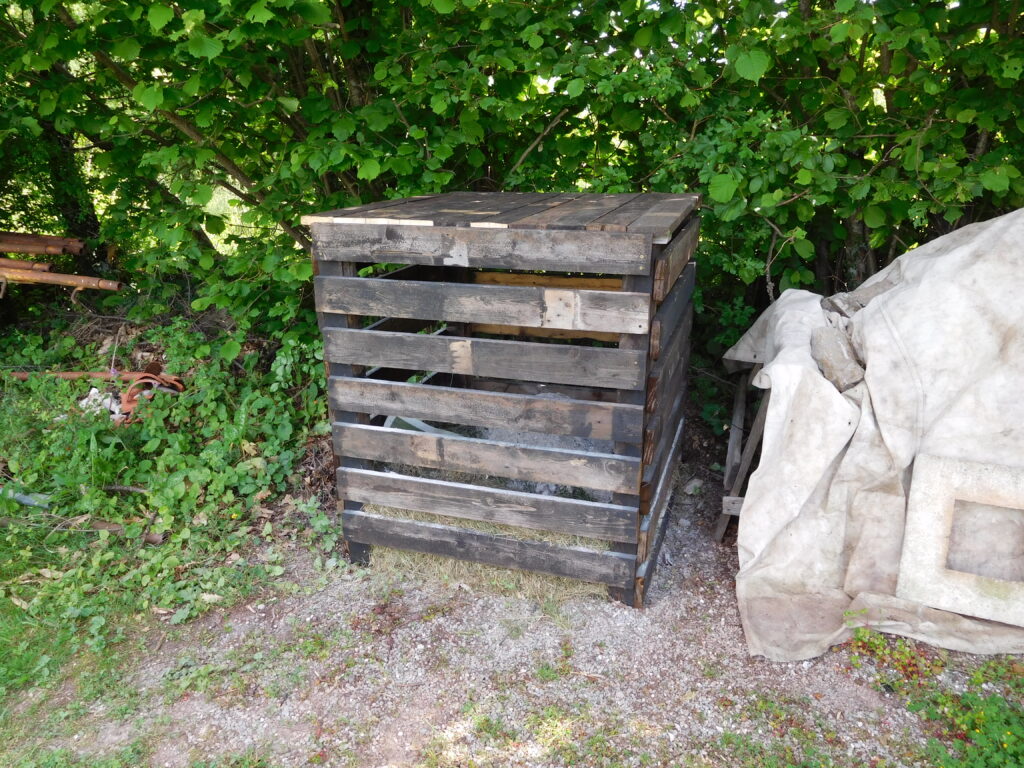and Solar Panels

Summers up here can be hot, so the addition of a swimming pool seemed a very attractive idea. With the expectation of many visitors wanting a decent swim we felt a good sized pool would be worth the money.
In early 2007 work began to install one.

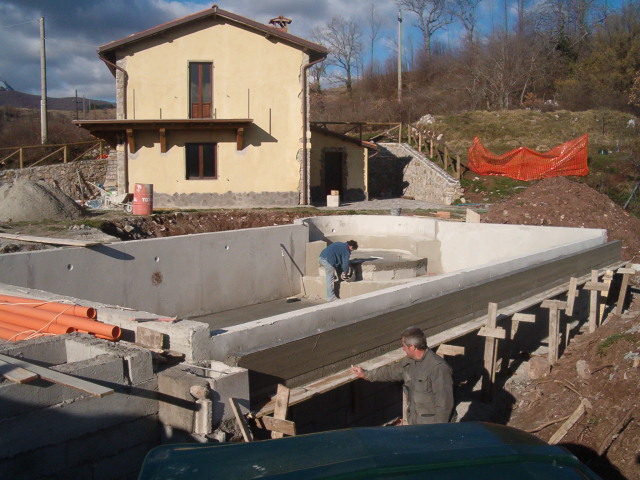


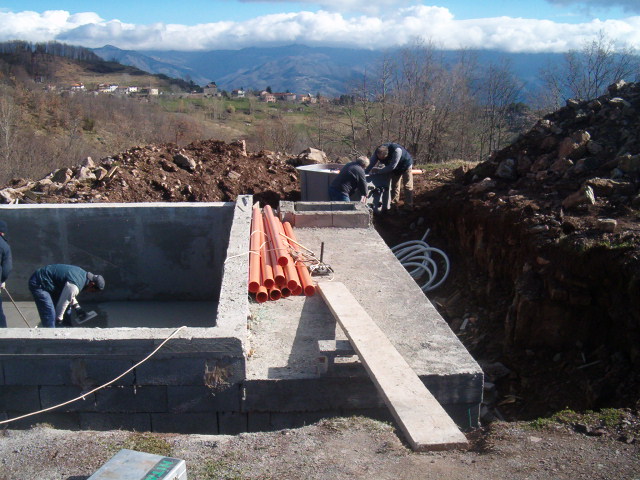
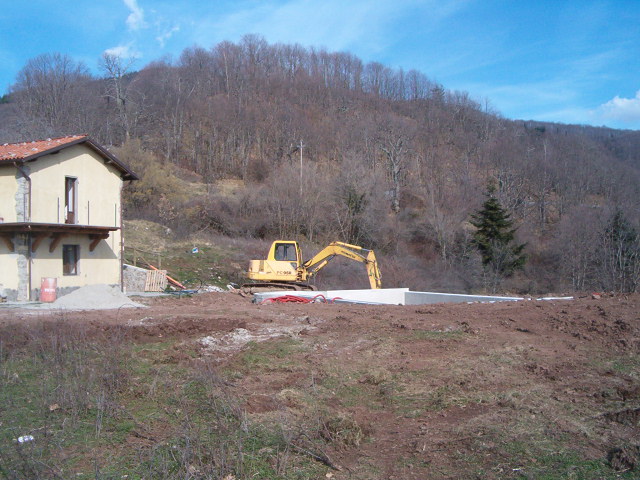
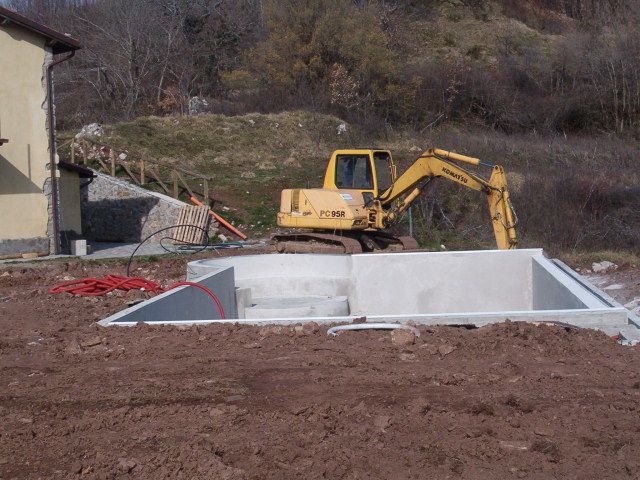
With such fantastic views we decided we would make the most of them, by adding an ‘infinity edge’. A Roman end with built in steps enabled easier access.
The pool was filled by water tankers as our water pressure is extremely low, and the supply comes from a small local tank. If we had used that water, it would have drained the supply.

However, maintenance of a pool takes a lot of time and effort, and needs careful consideration (something we didn’t do!). In this area, wild life and the weather is often against us, not to mention, some of the workmanship!
Sadly, our infinity edge has never functioned as anticipated, the whole pool has dropped slightly in one corner, and now the infinity edge is not level. However this has not affected the use of the pool.



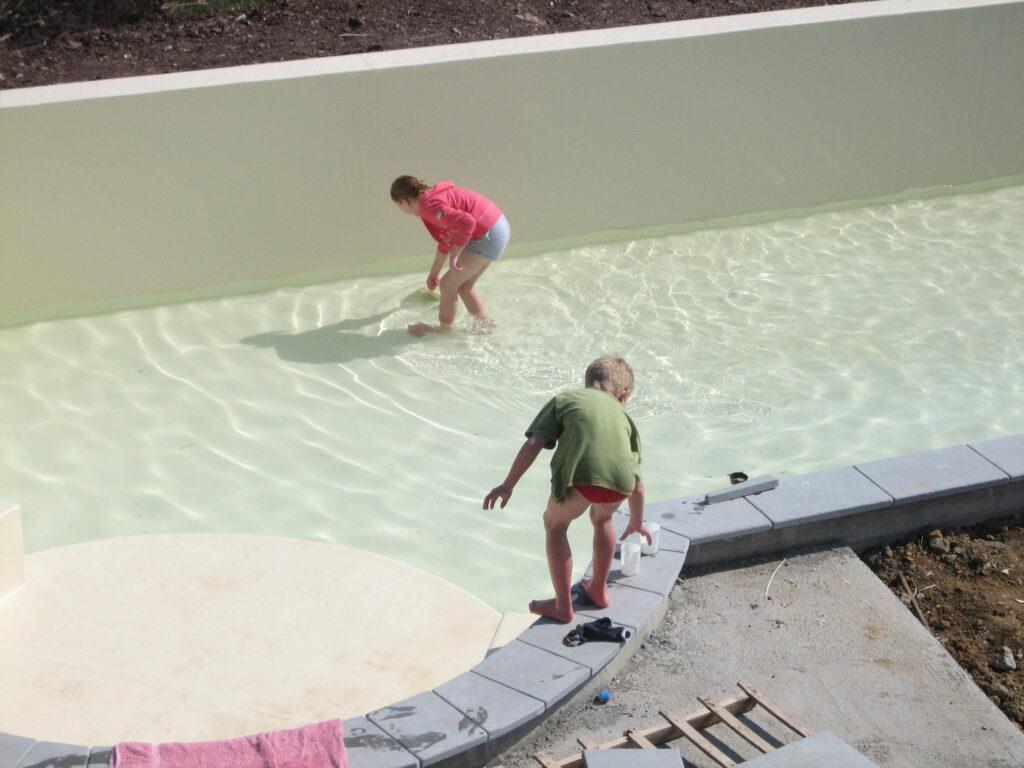
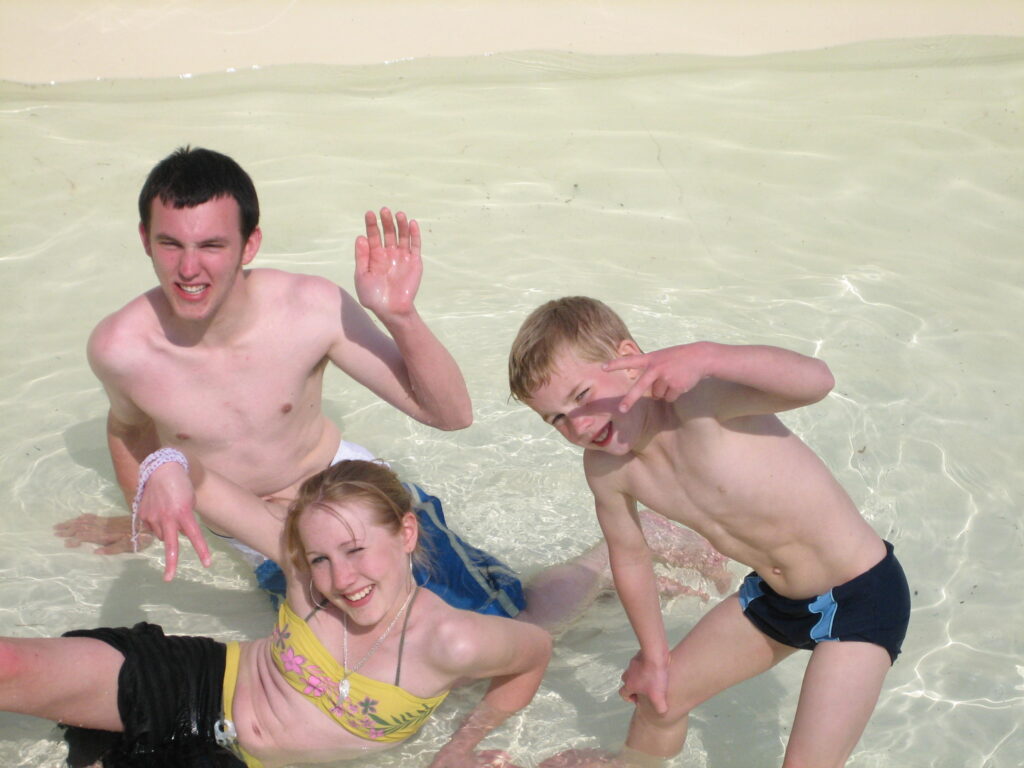

The pool is 12m x 6m and approx. 1.5m deep. There is a covered compensation well, 2m x 6m and 1m deep which has a high/ low water level gauge.

When the pump is switched on, water leaves the compensation tank and enters the pool through 3 vents to fill it up. When it is overfull, the water runs over the infinity edge, along the water channel, and back into the compensation tank, and the cycle continues.
There are 4 vents, (one of which also diverts water to the solar panels, heats it and returns it to the pool), another is an extraction vent, used to operate the vacuum.
Getting used to the pool controls, has taken many seasons to master, and at last we feel we understand the workings of our pool, but at any time, things may take a turn, and catch us out.
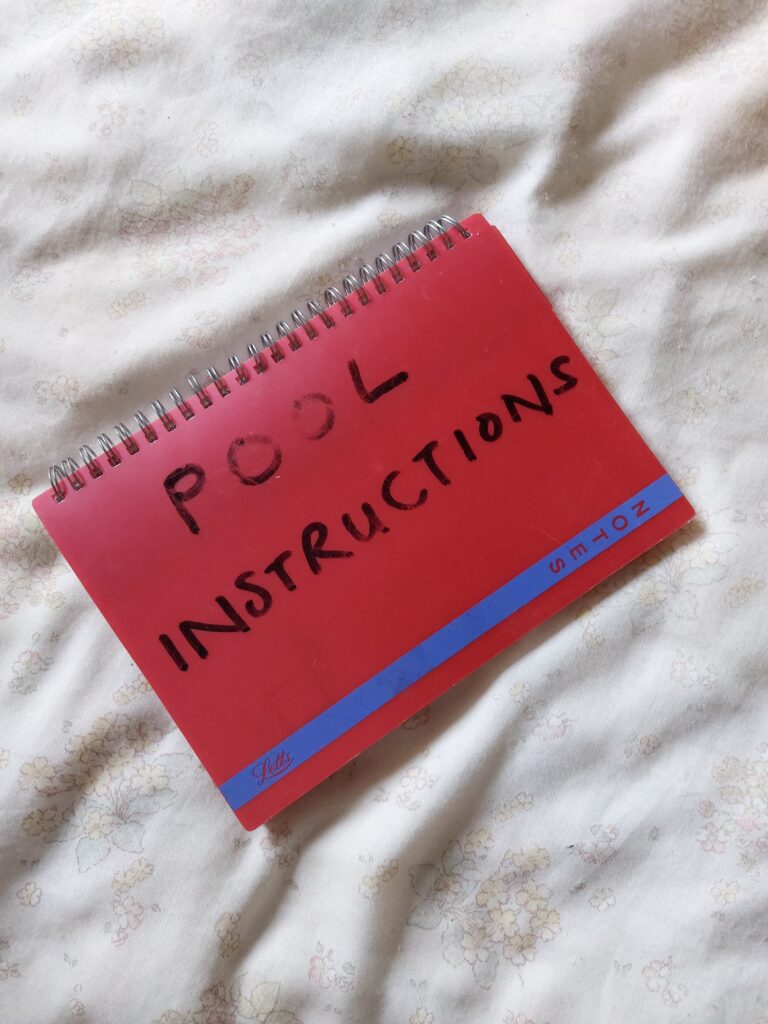

The weather plays the greatest part. Usually lack of water due to drought, as we have to mainly rely on rainfall to keep the pool topped up, and without enough water, the pump will not operate, so we can’t keep the pool clean.
Once we had mastered the controls, we had to learn about pool chemistry, and how to add the correct chemicals at the right strength and time, to keep the water clear and hygienic.



On each summer arrival, we have to ‘open’ the pool. A winter cover is used to keep dirt out. It has to be firmly tied down to prevent it being blown off. Our first cover had no drainage holes, so in the winter, it filled with rain or snow, which displaced the pool water, and damaged the cover and fixings.
We bought it over in October 2007 and discovered what happens to an uncovered pool in autumn! There was a thick layer of muck and leaves on the bottom. A new cover was designed and made by Mark at Weatherill Brothers Ltd. and bought over in 2018.





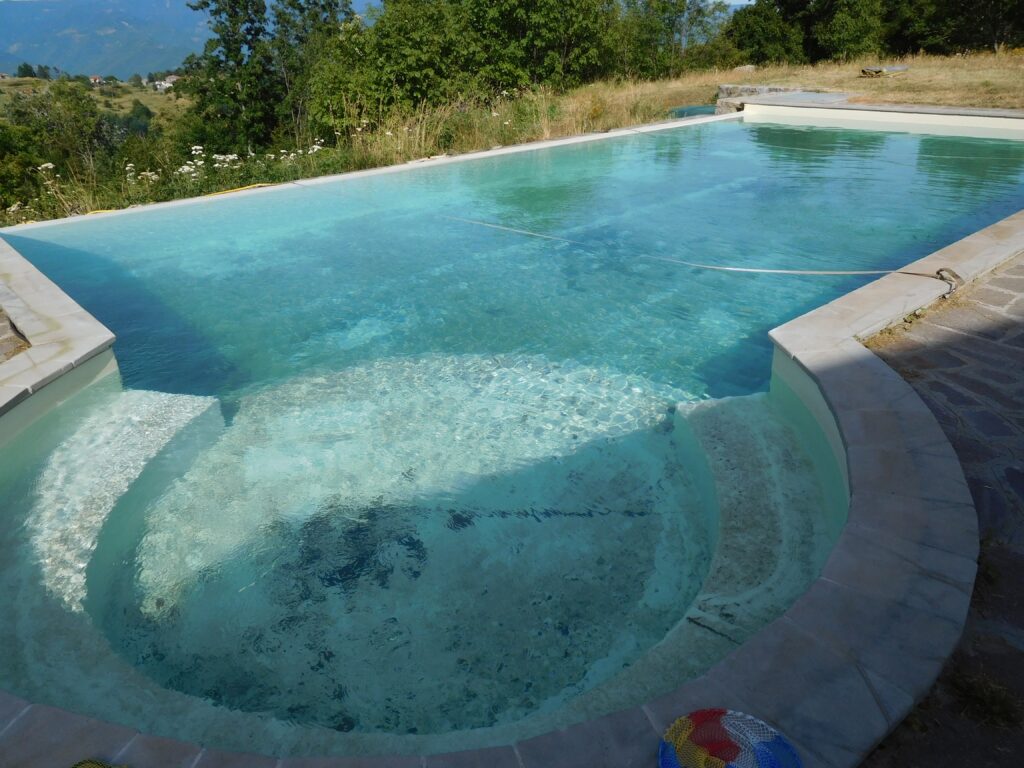




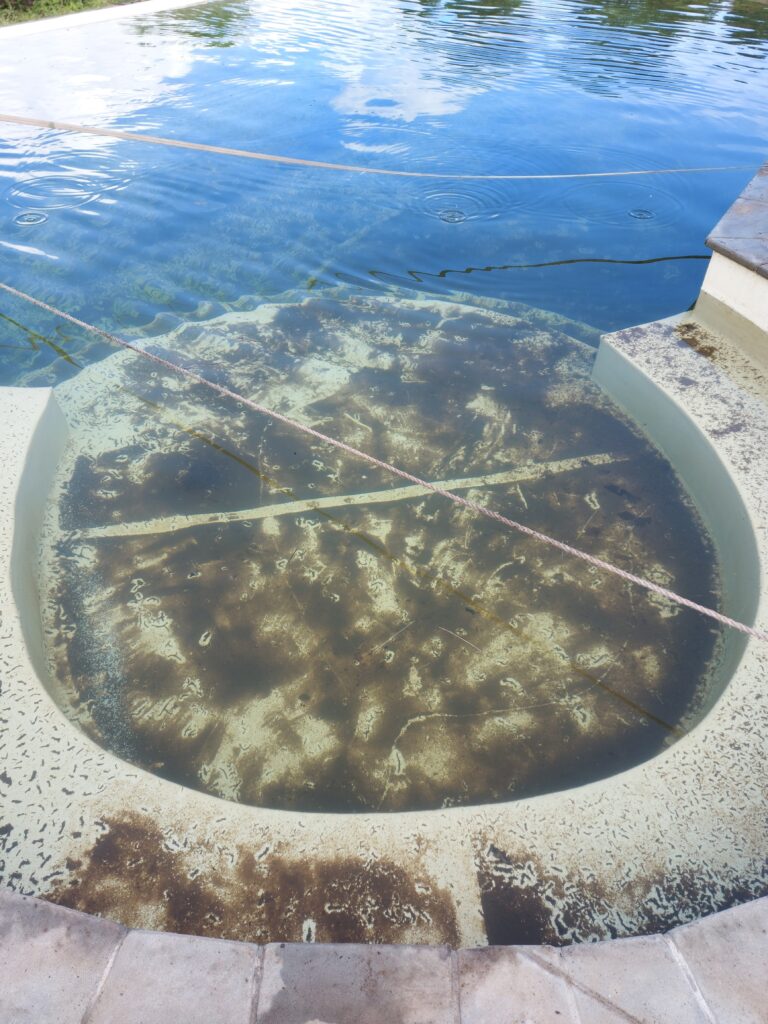


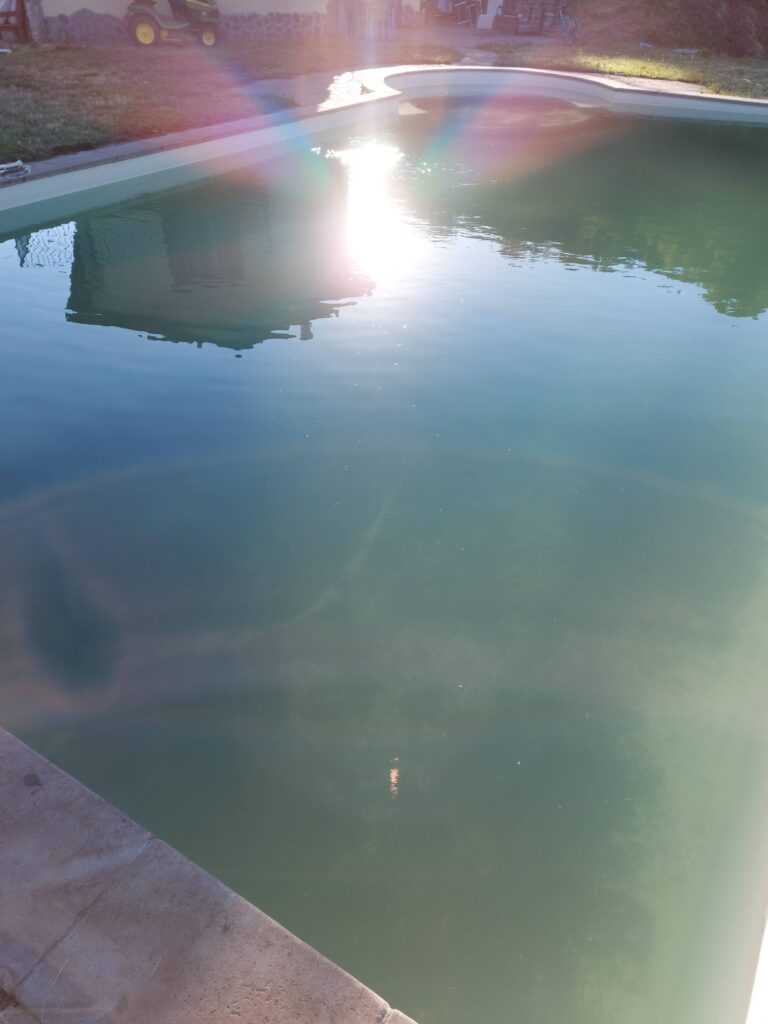

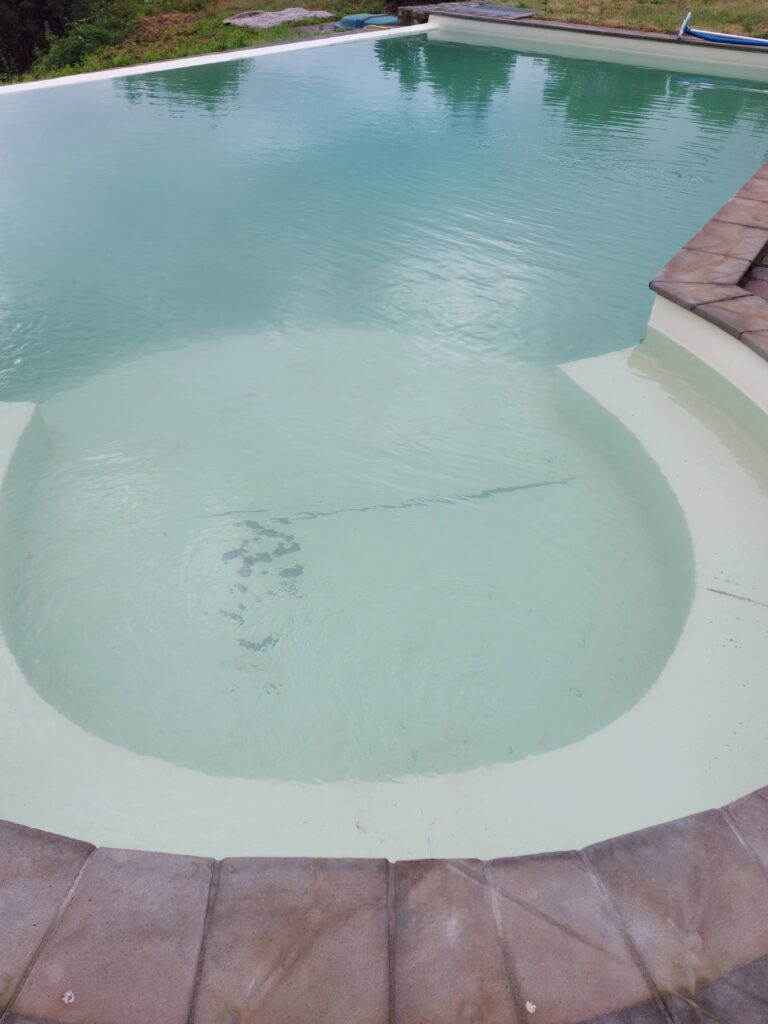

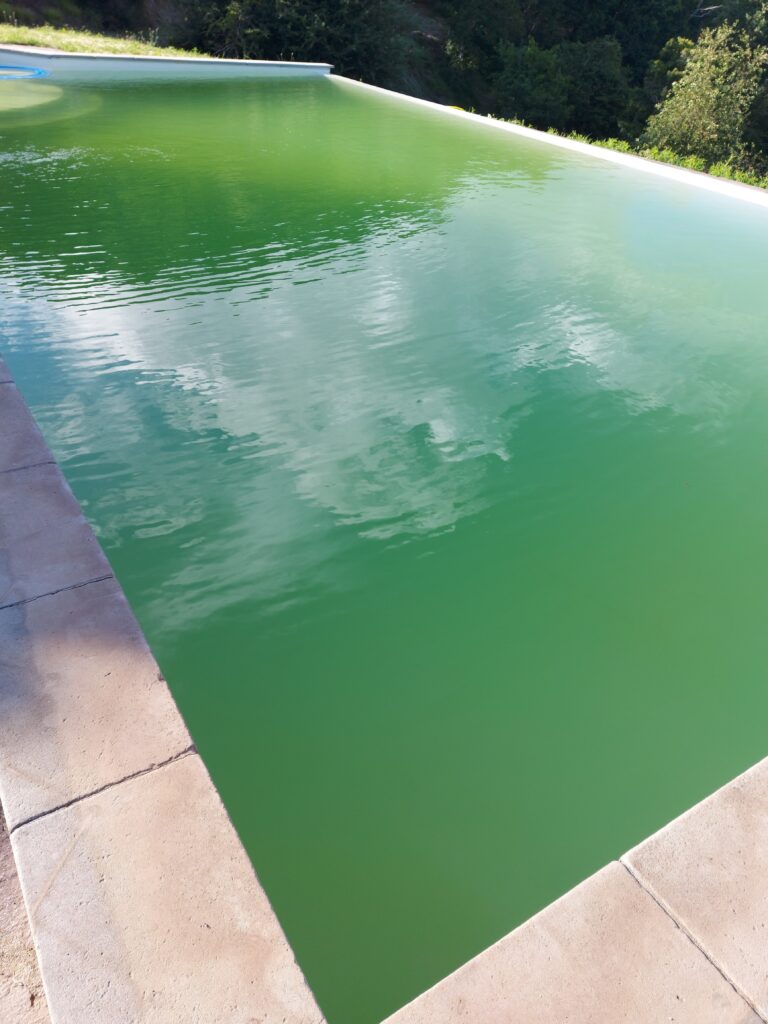


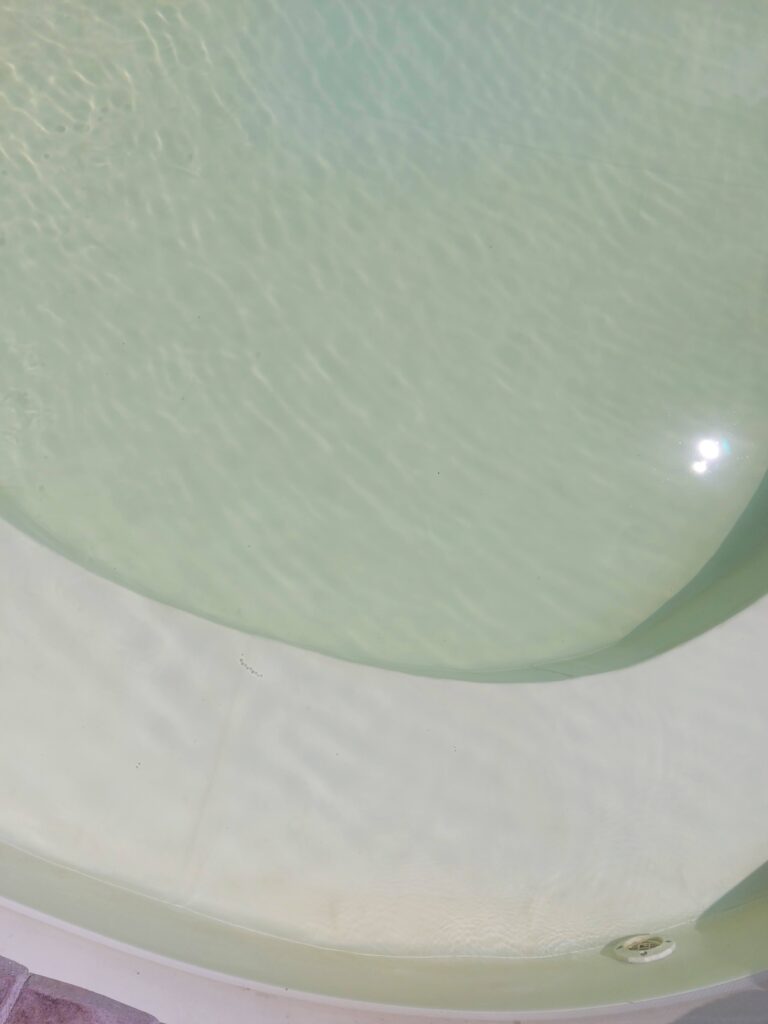


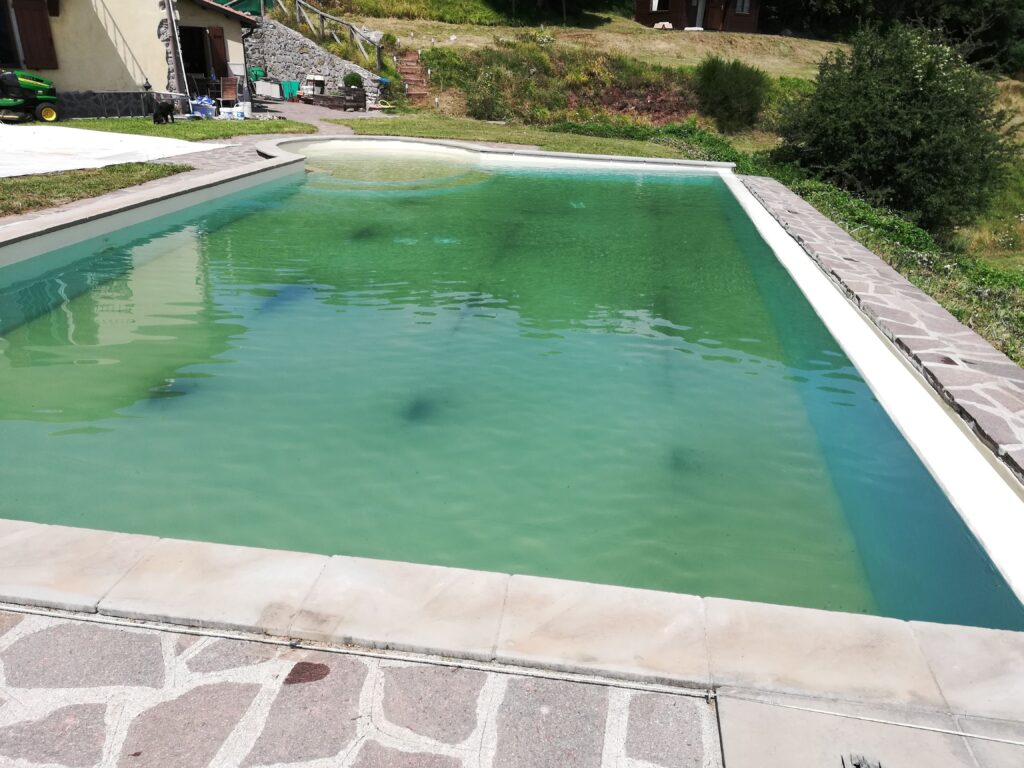
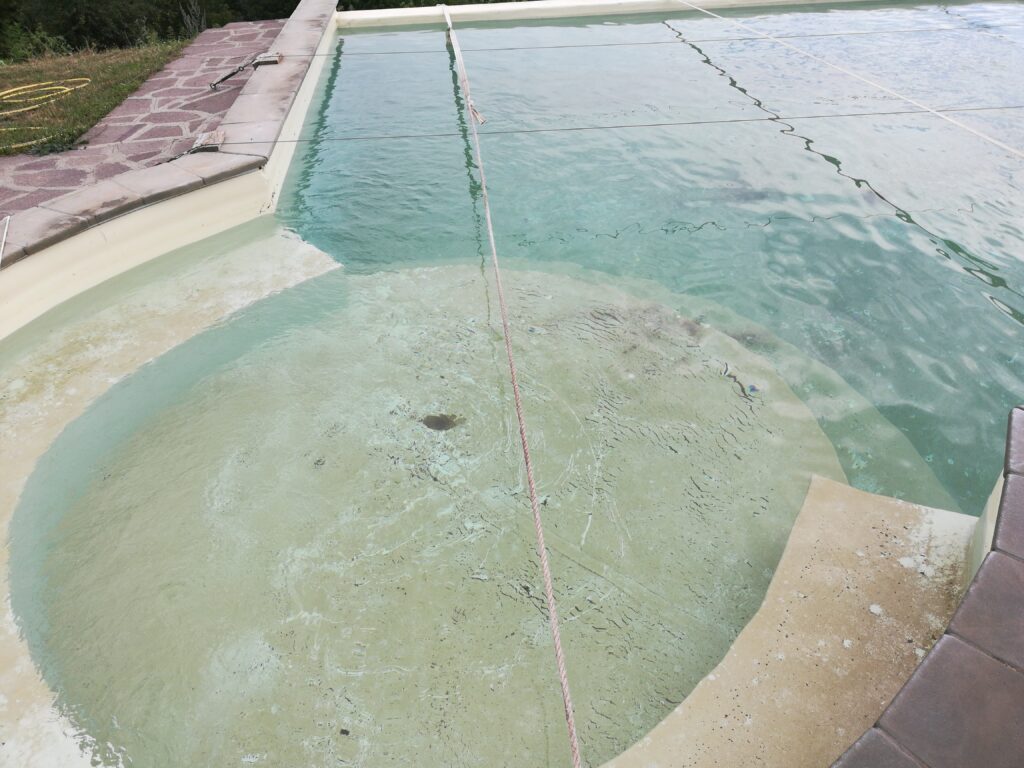
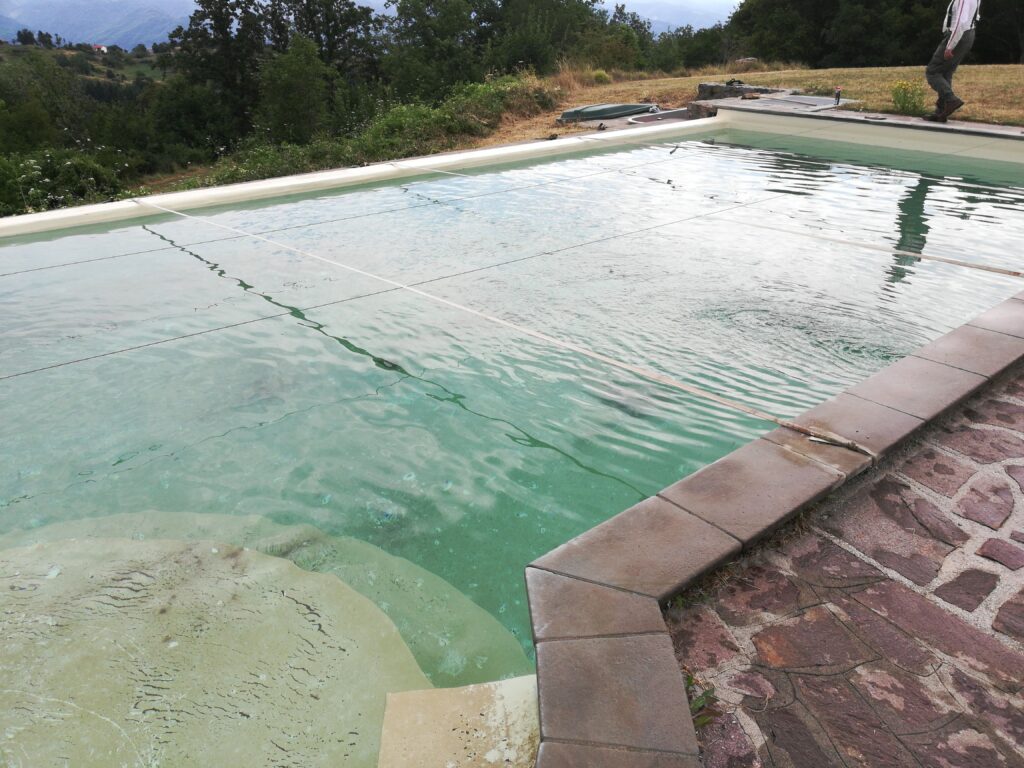


Then the cleaning begins…. the bottom is cleaned by using a special vacuum many times over, the dirtier the pool, the more often the filters need cleaning, which uses up the water.
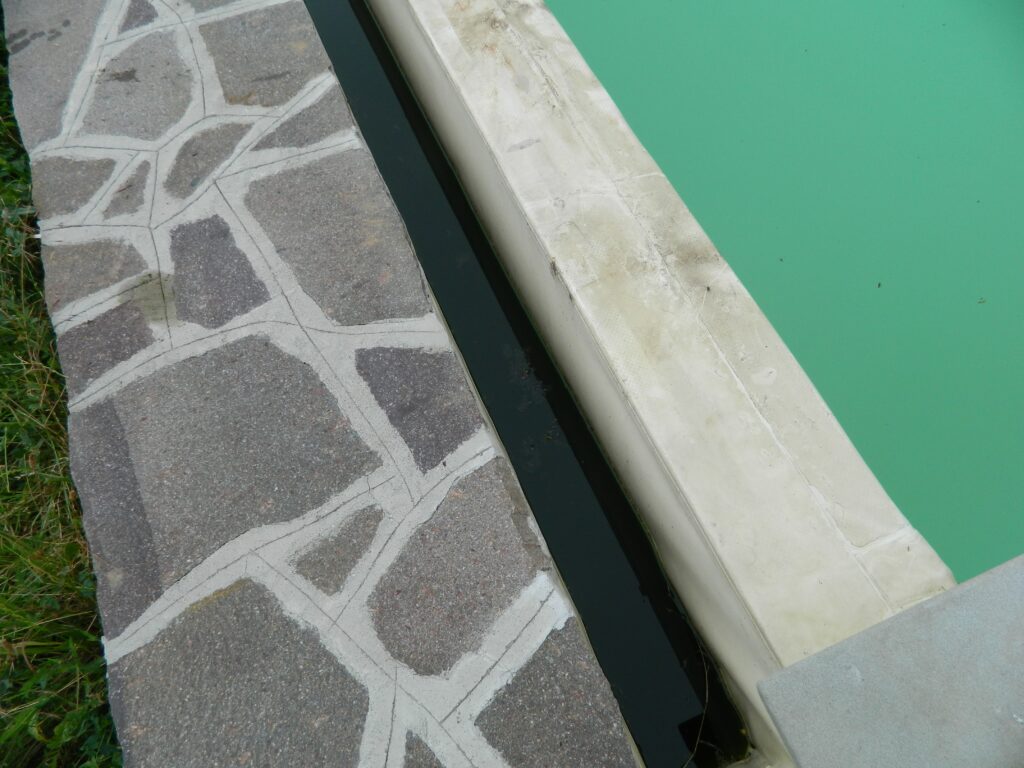

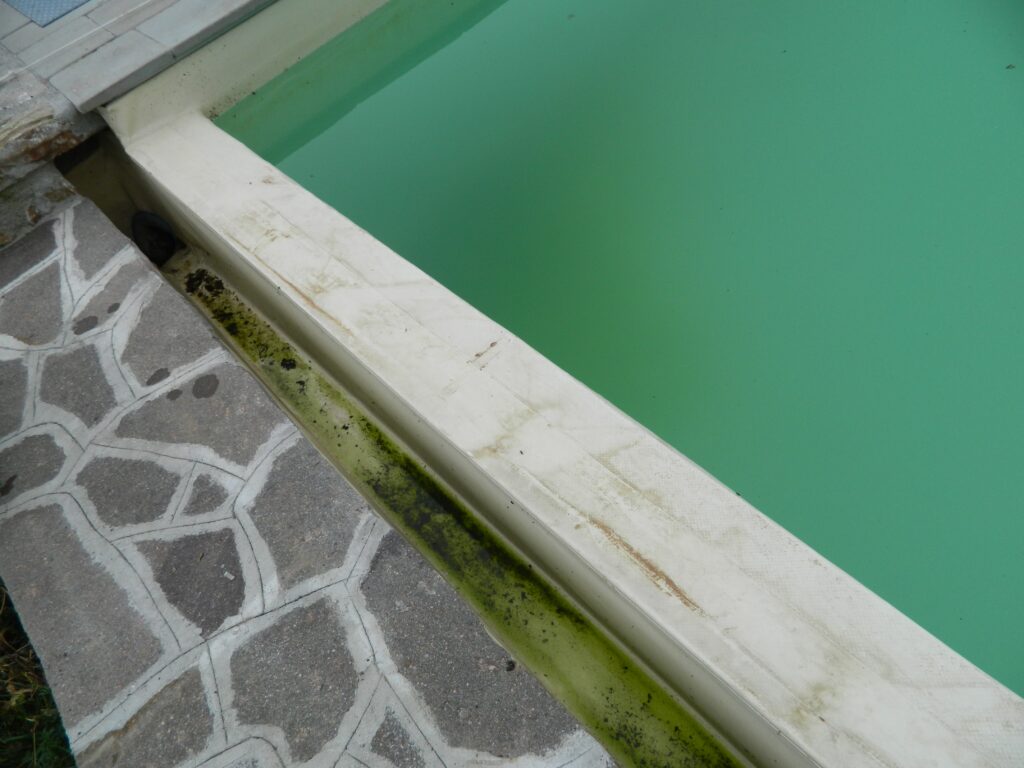

The overspill channel requires cleaning. Due to a mistake in its construction, the water gathers at the wrong end unless the pump is on – over winter this can get green and stagnant. There is a collection net to prevent debris getting into the compensation well, which requires checking daily. This often collects insects, newts, lizards, frogs and on one occasion a swallow.
Then the sides are cleaned with elbow grease!

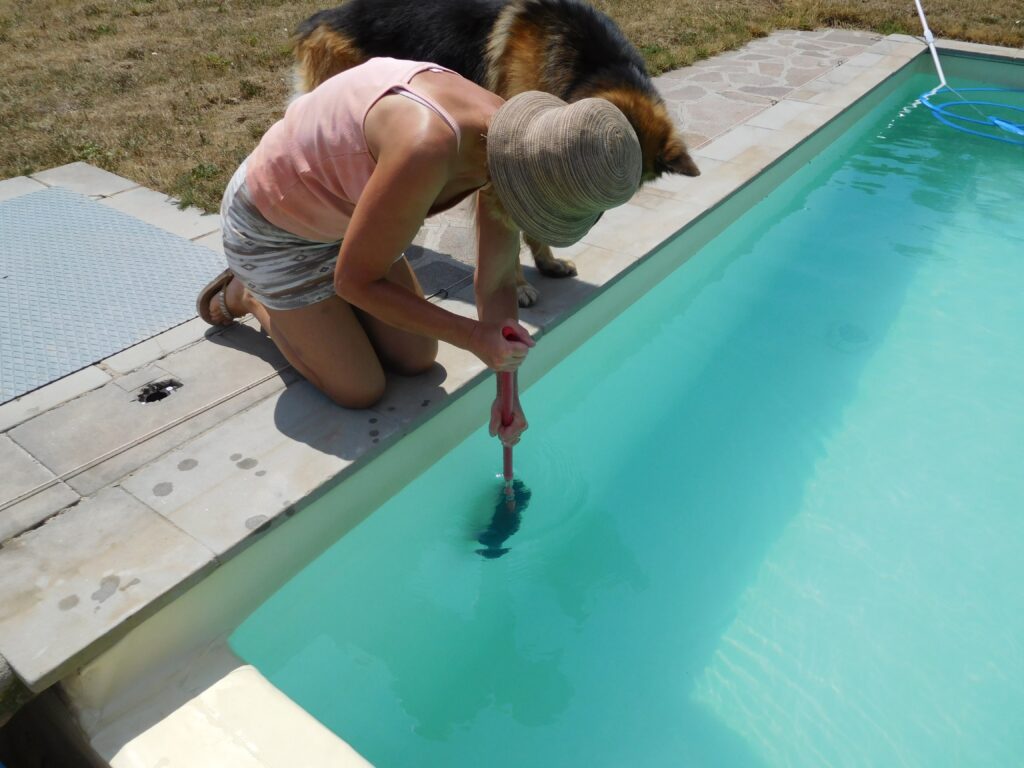

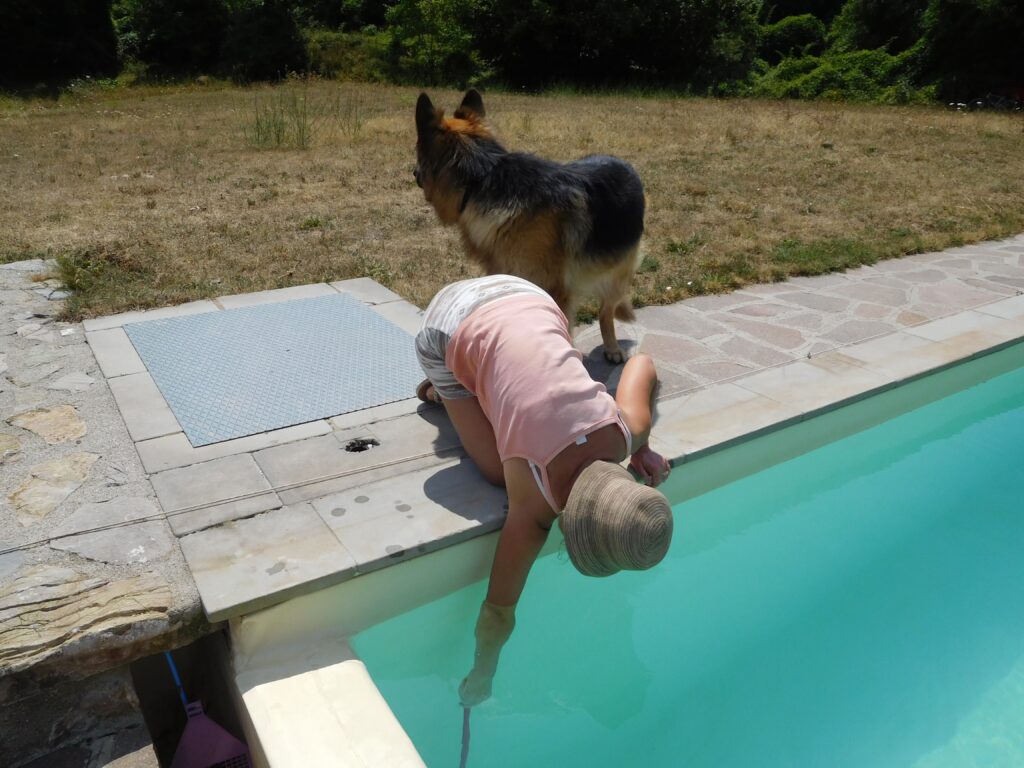
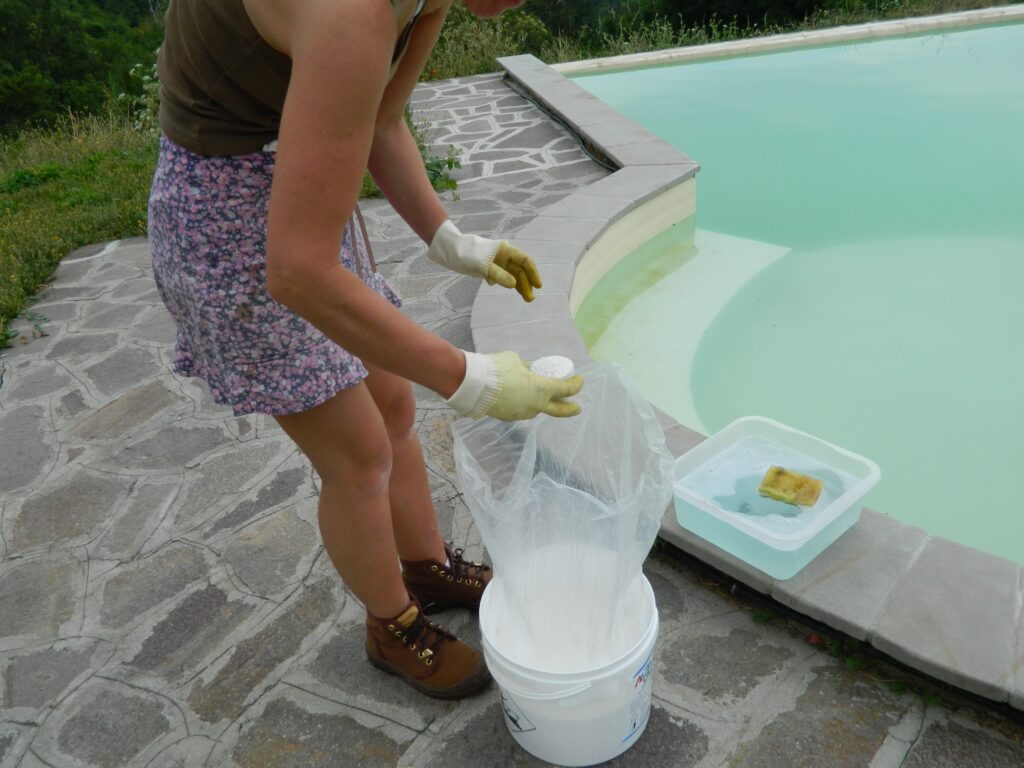



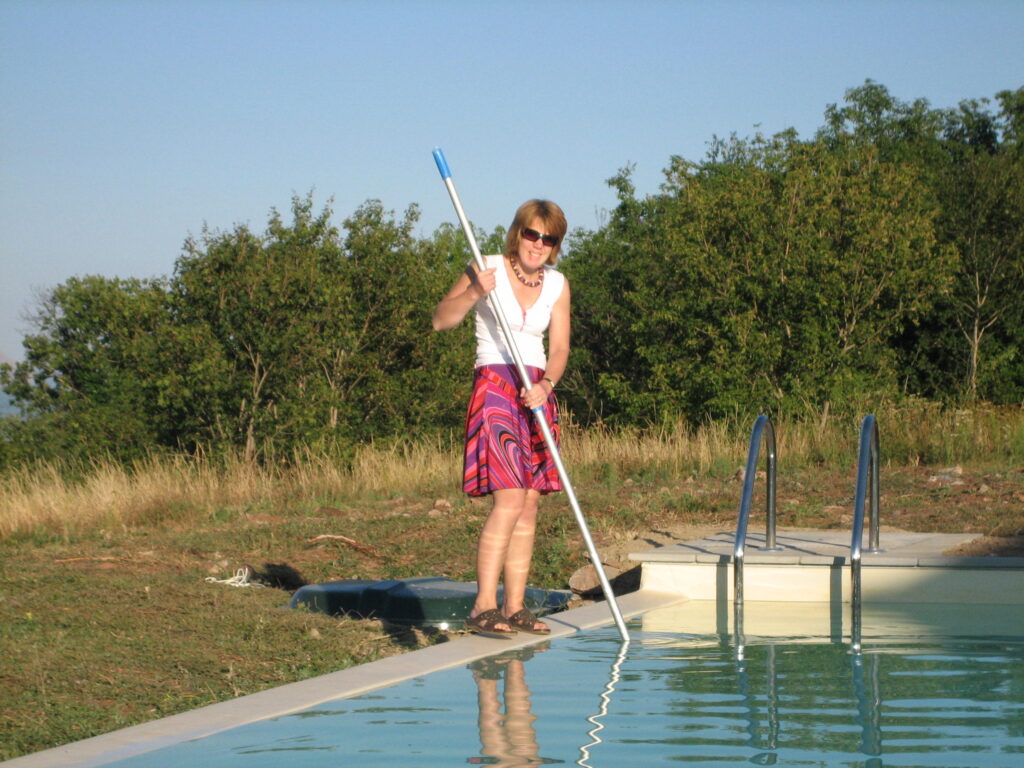
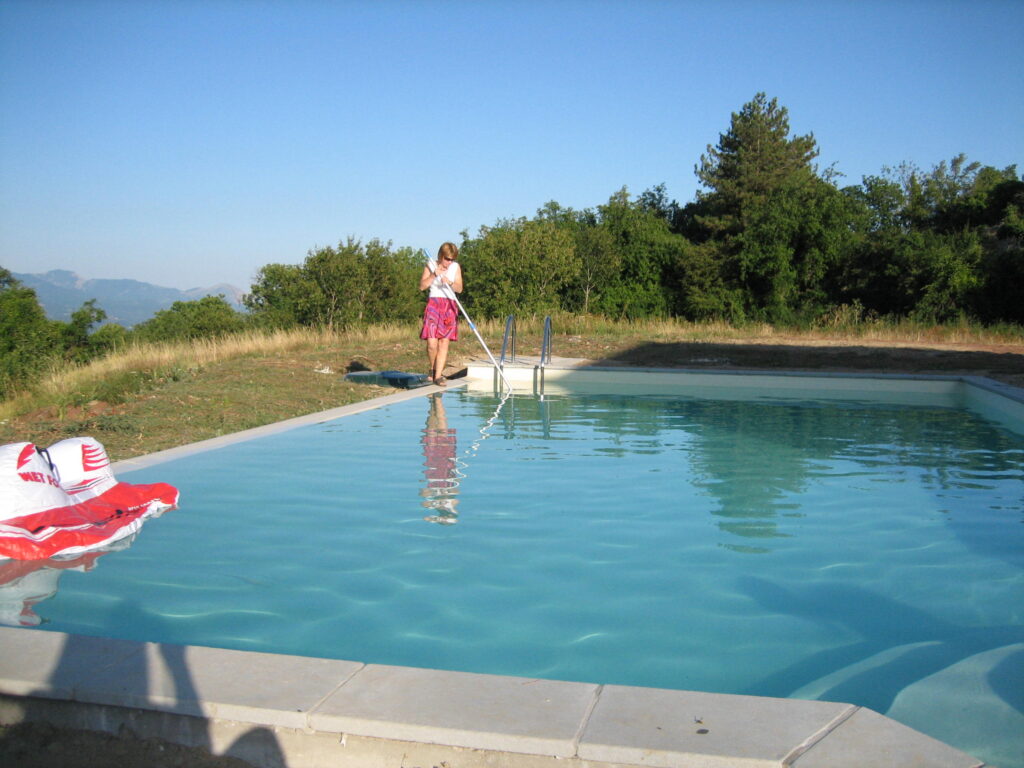
At the end of the season, the pool has to be cleaned and covered for the winter in reverse of opening up. All the controls need closing, and insulating against the low winter temperatures. It is usually a rather sad day.
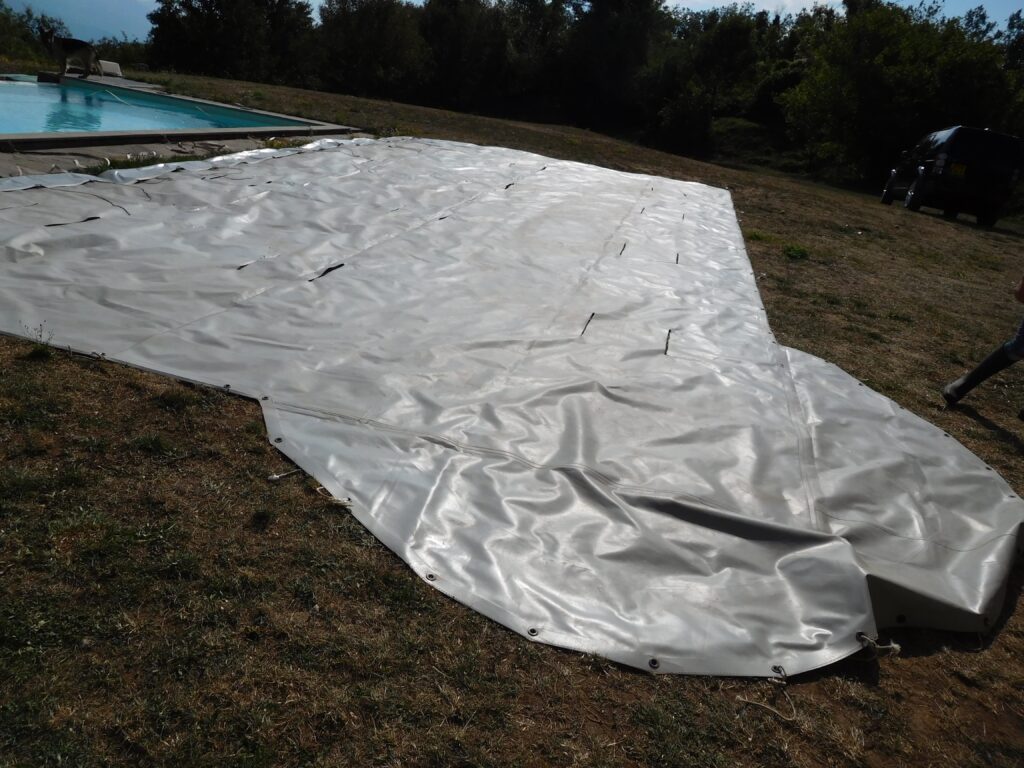

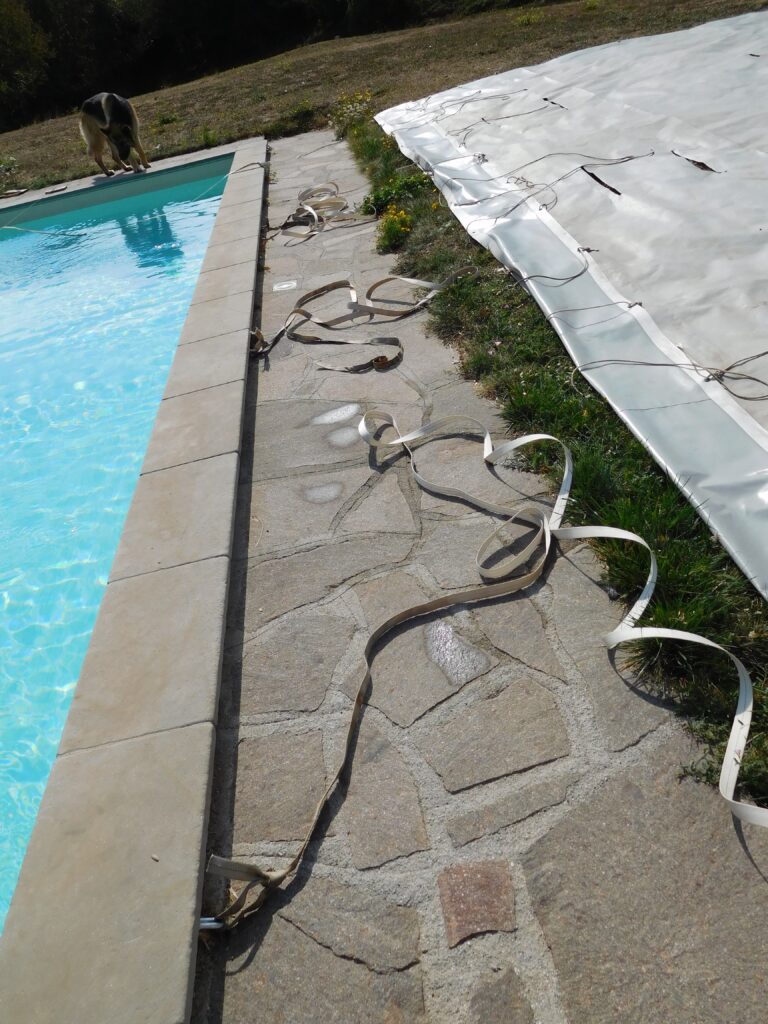
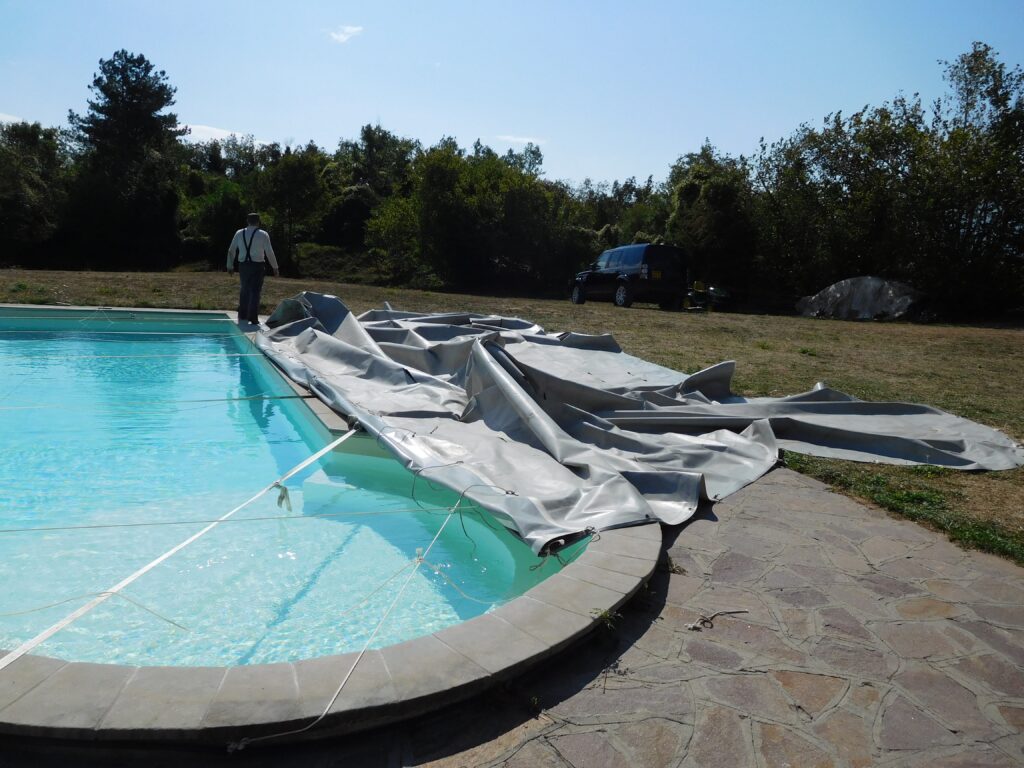

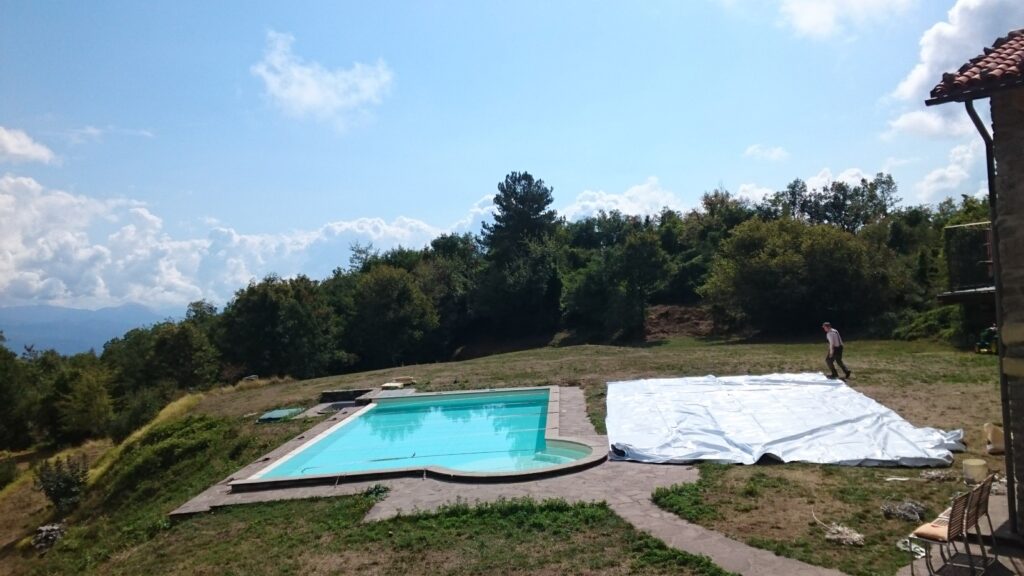


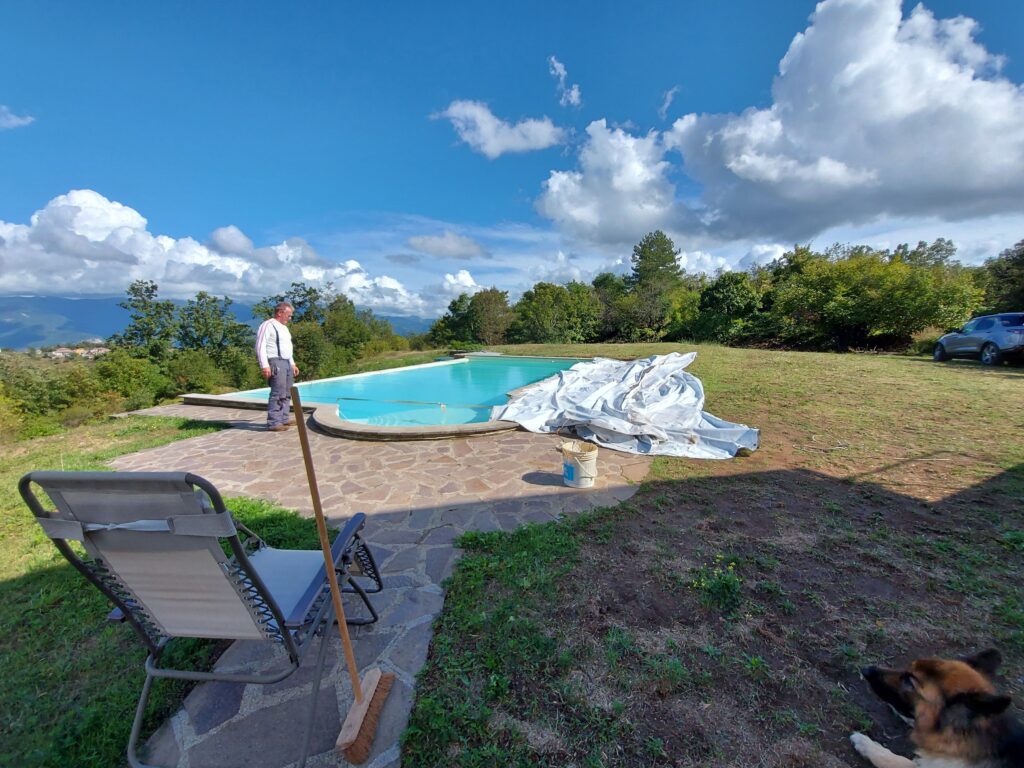
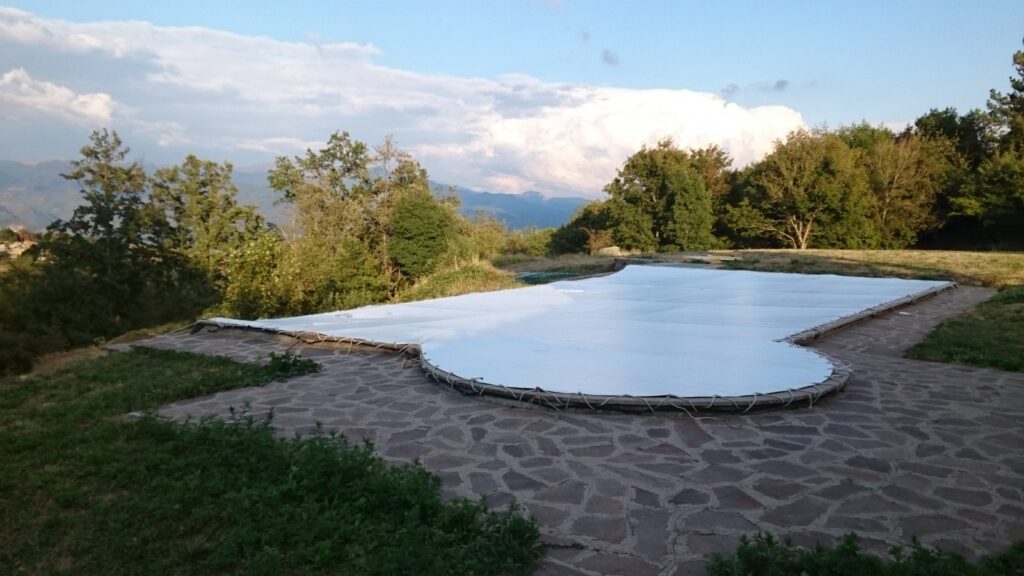
But its not all work!
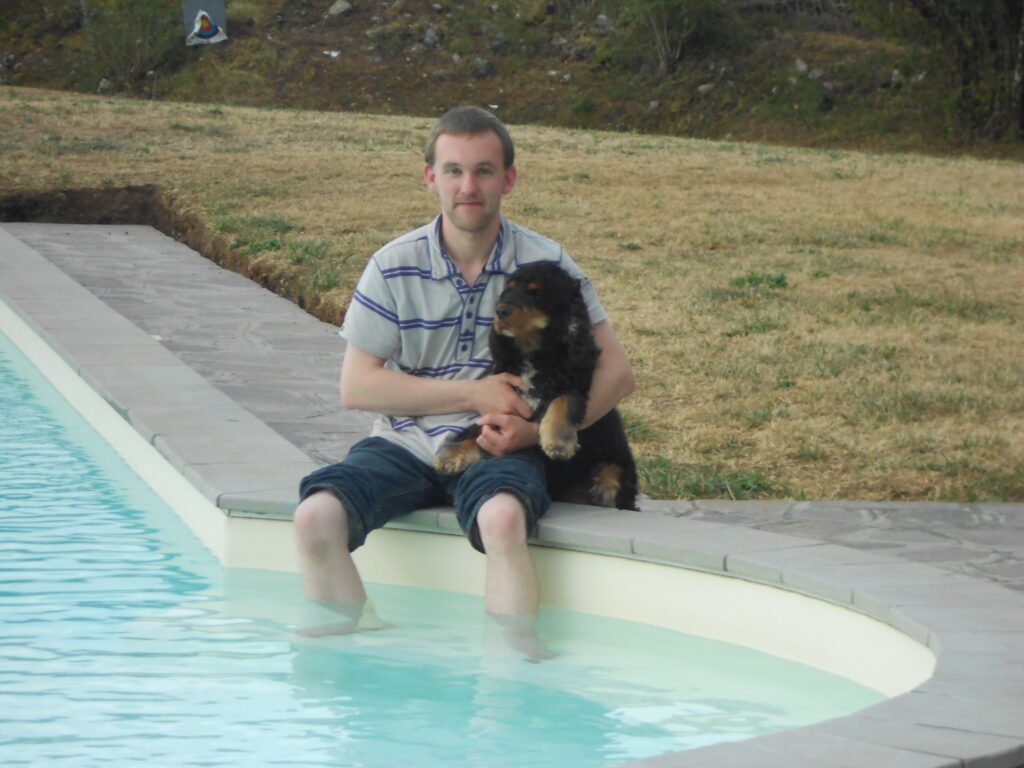

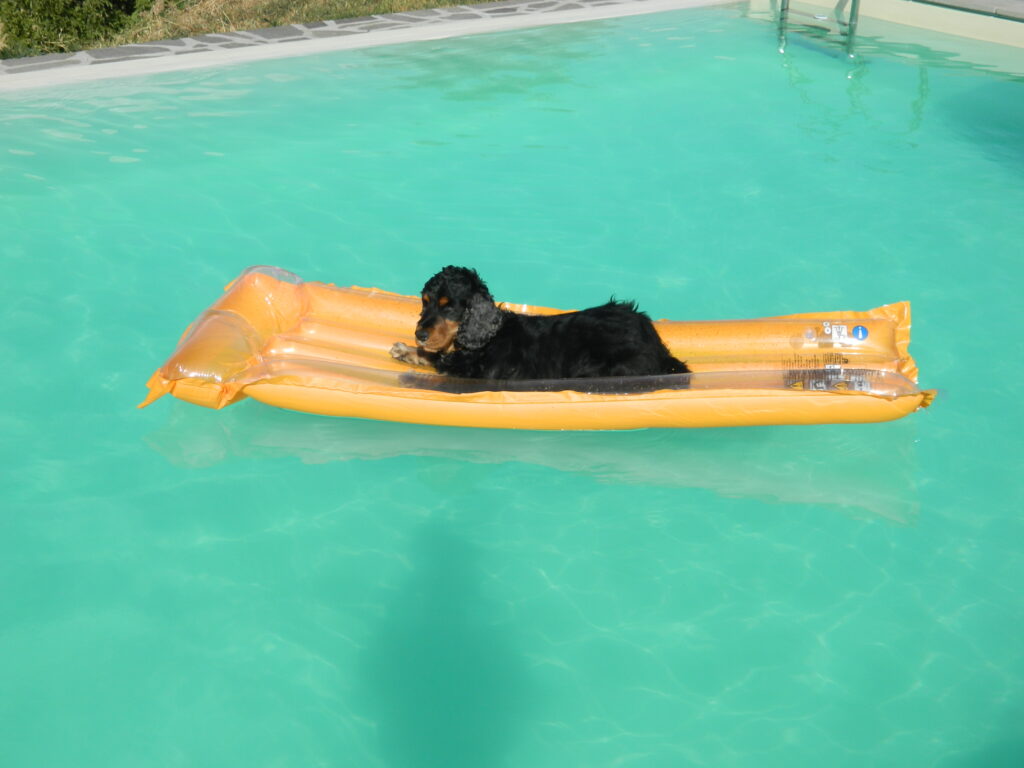
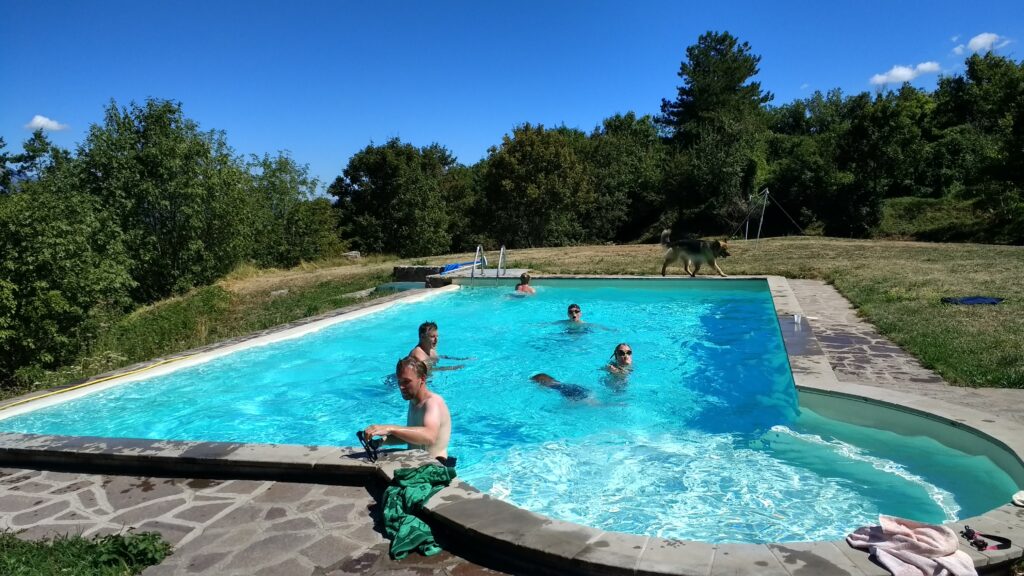

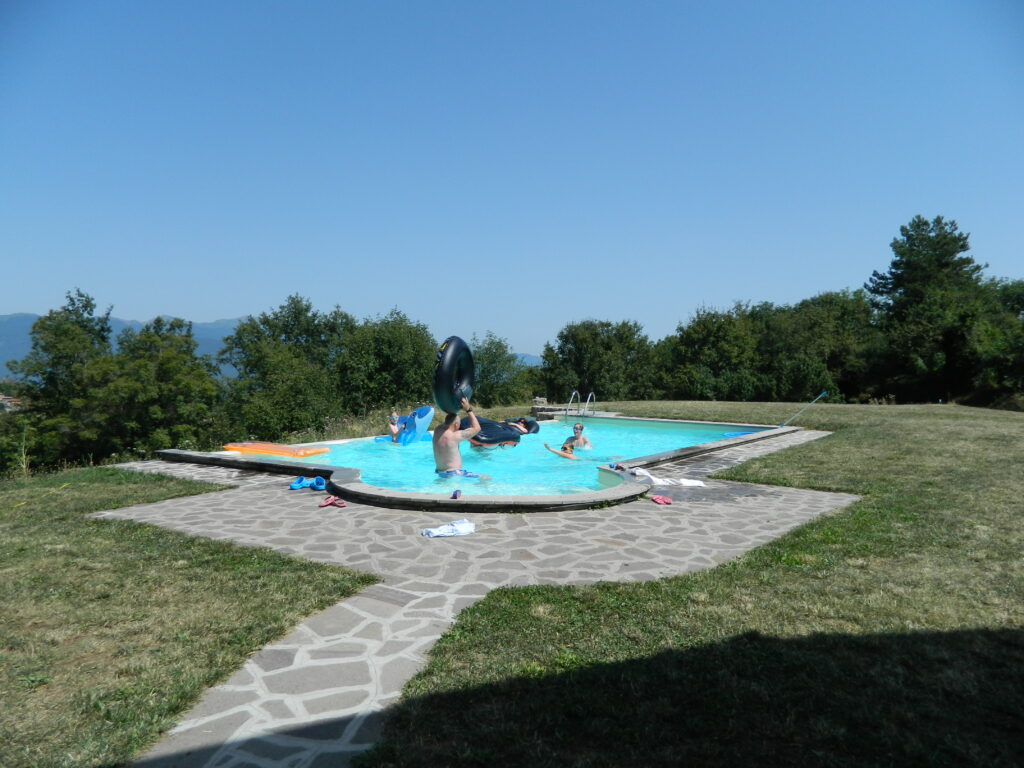


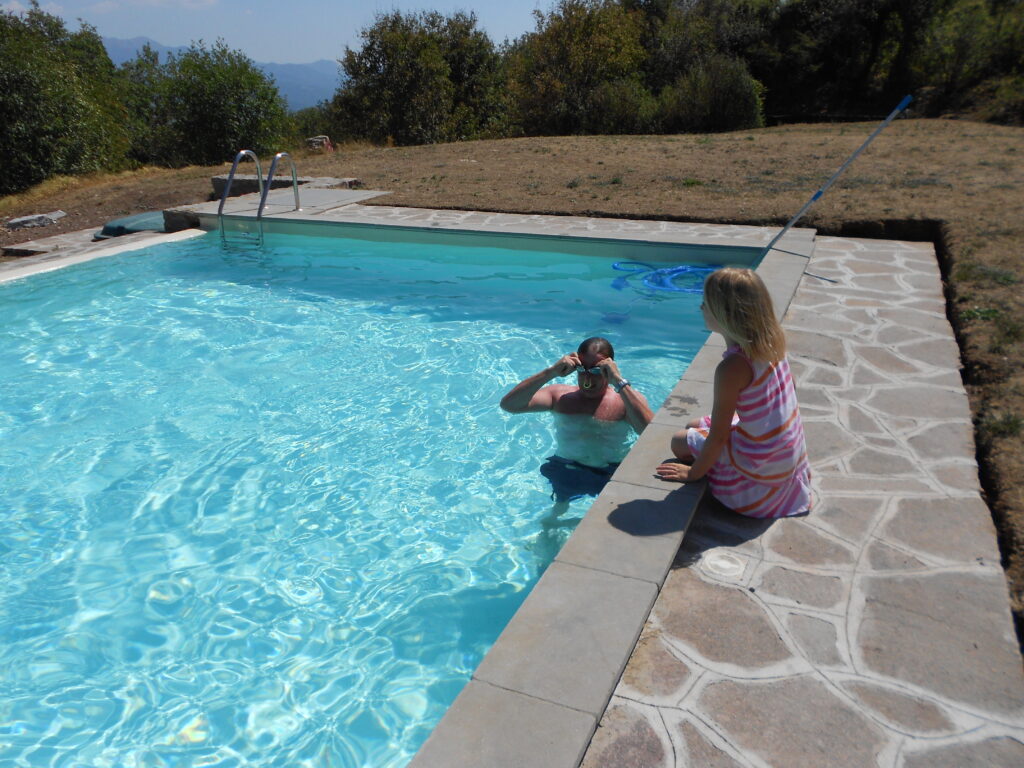





Sometimes we have unexpected visitors.

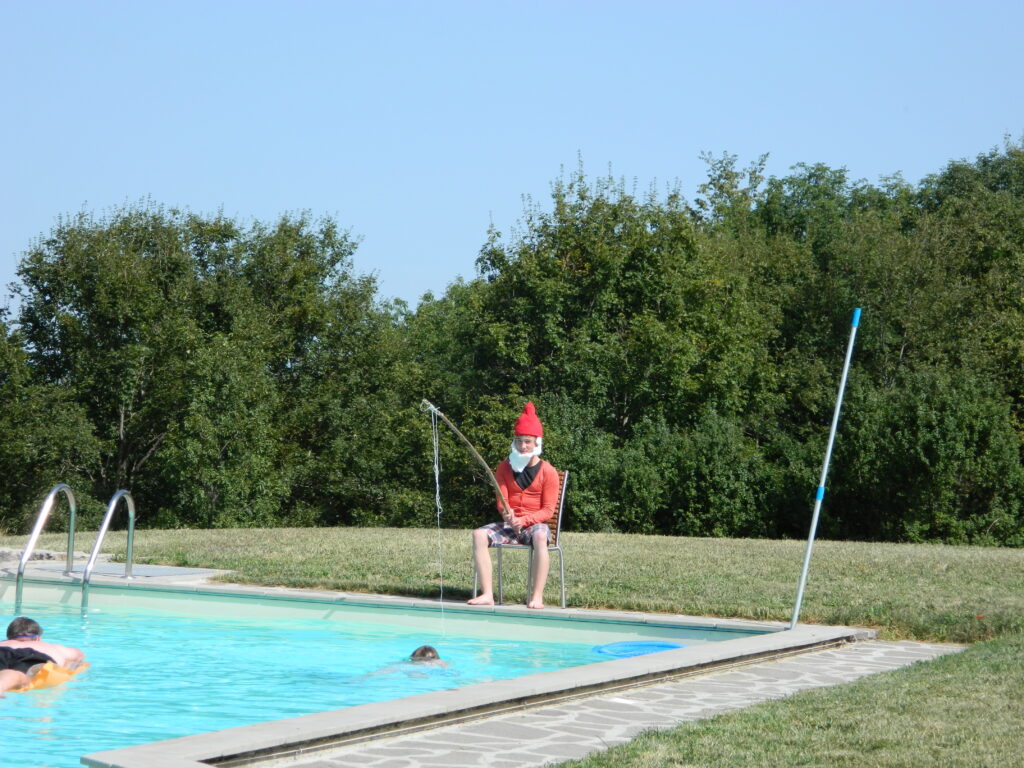
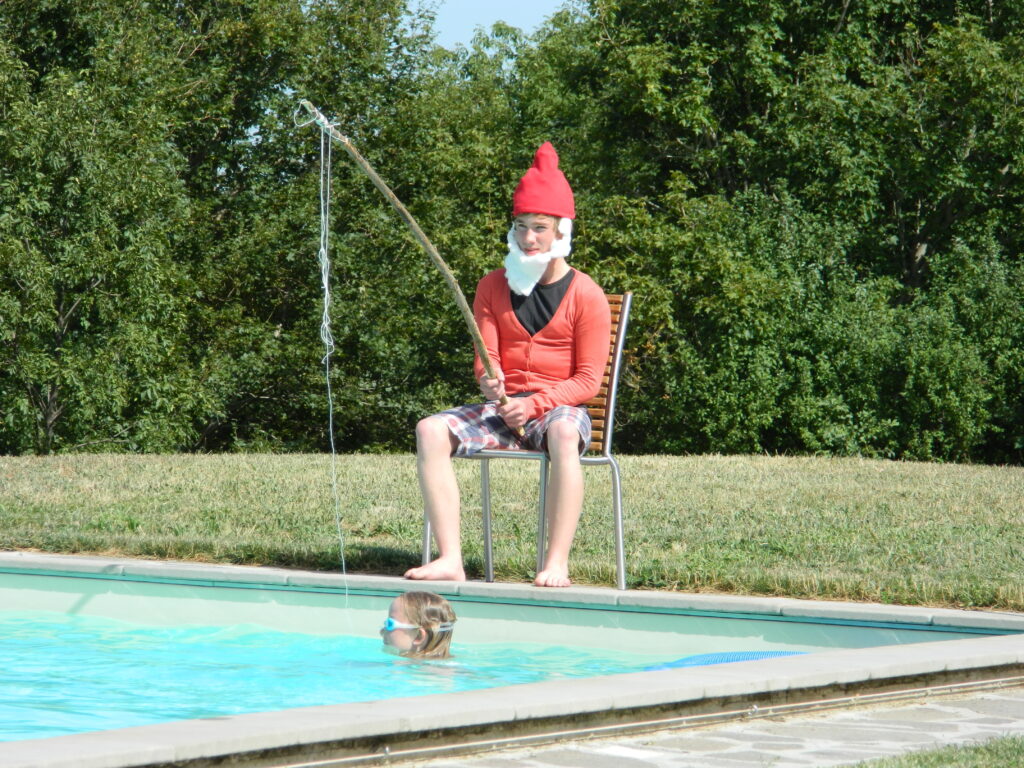
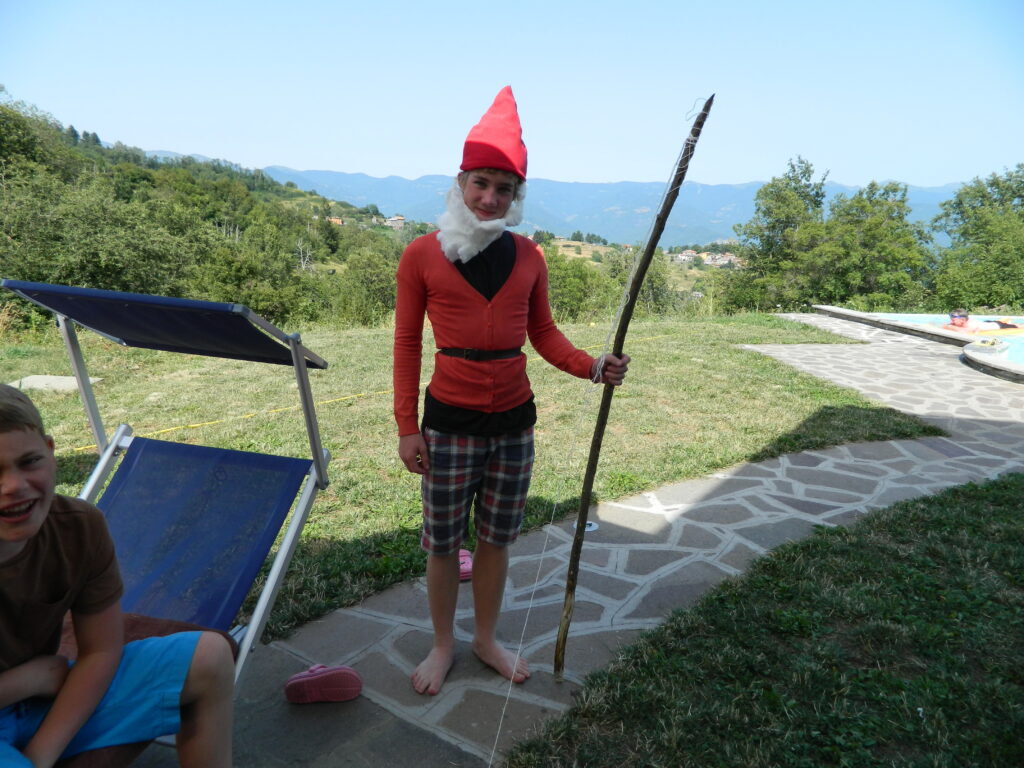
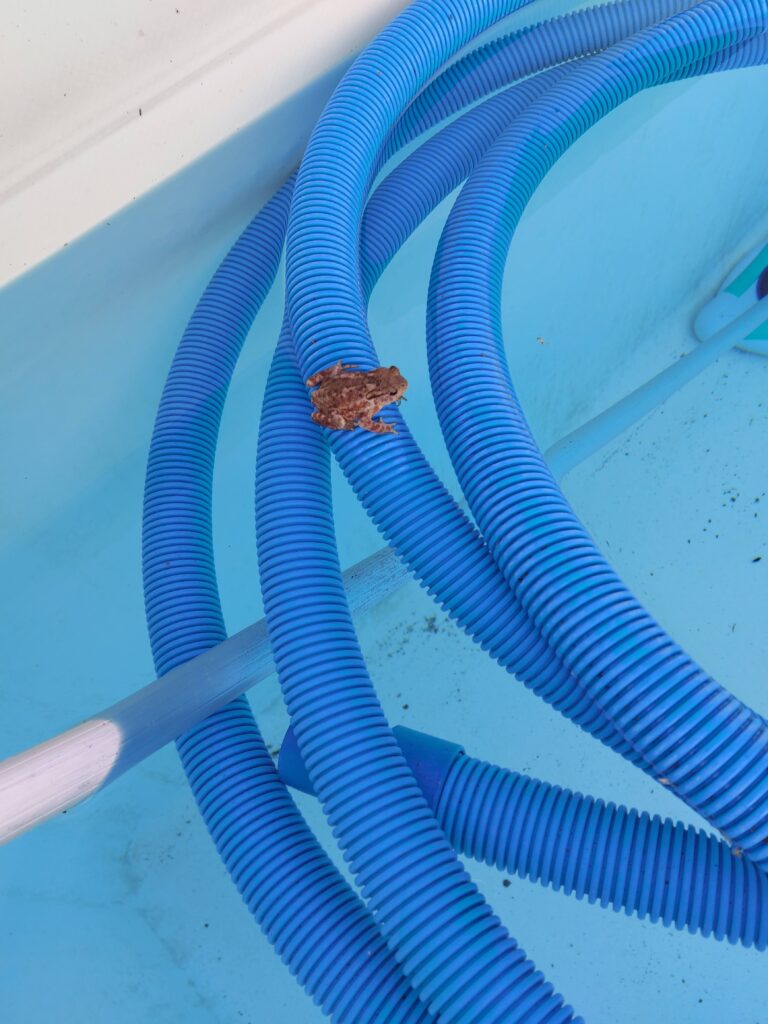


It is all worth it!

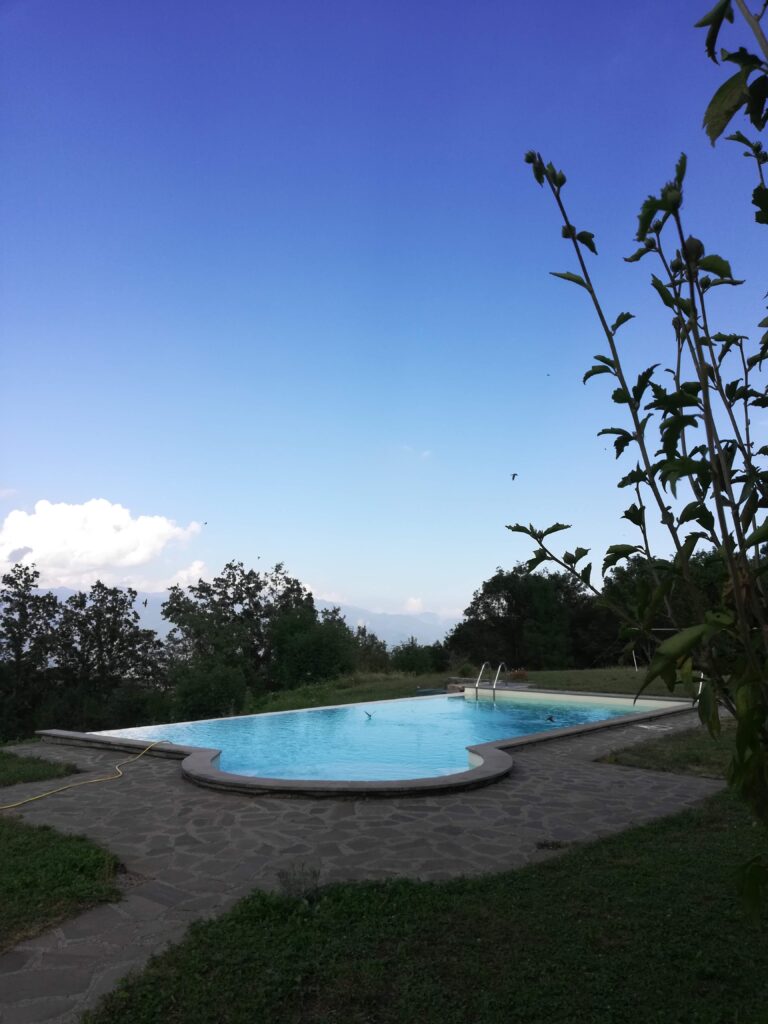
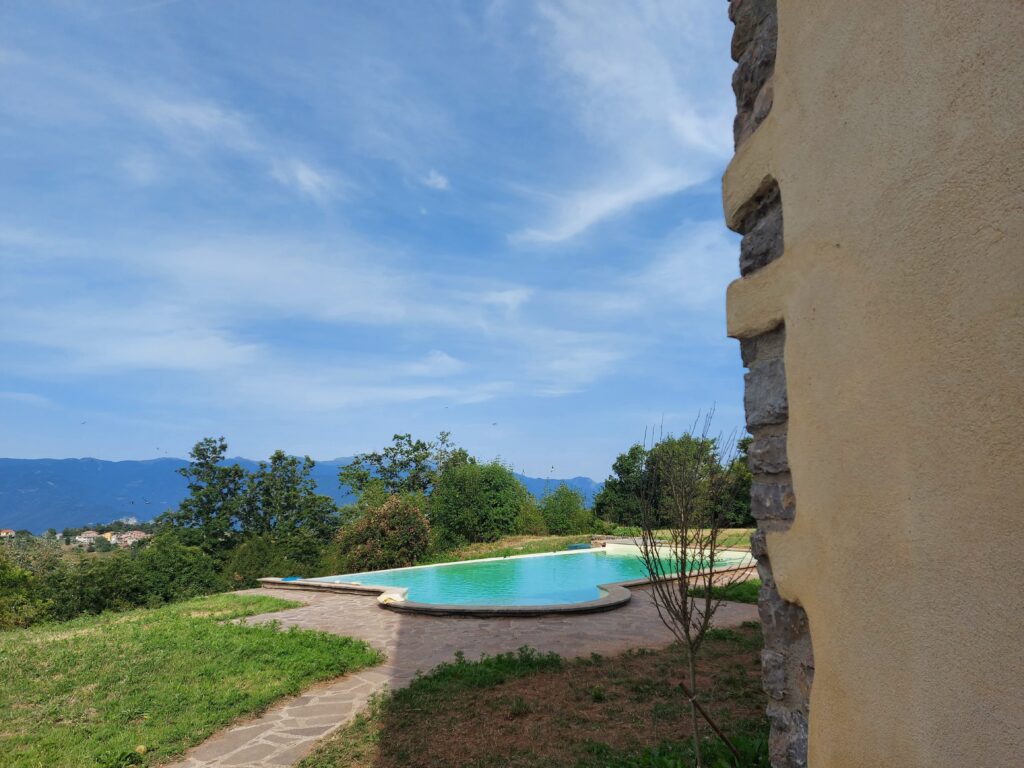
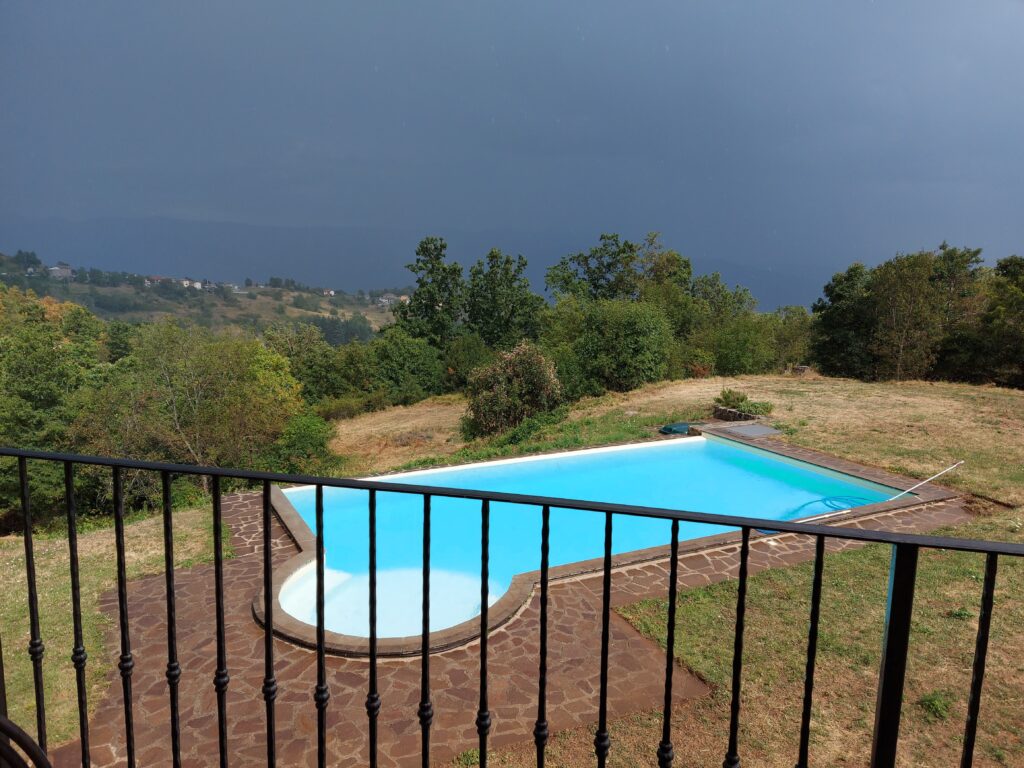



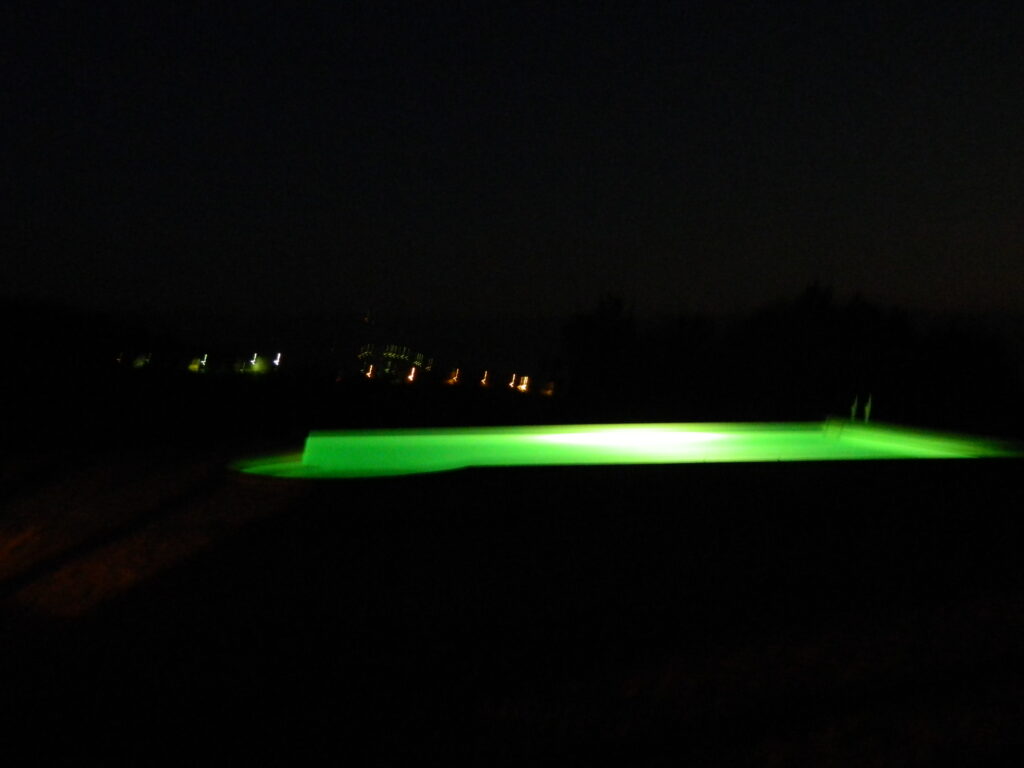
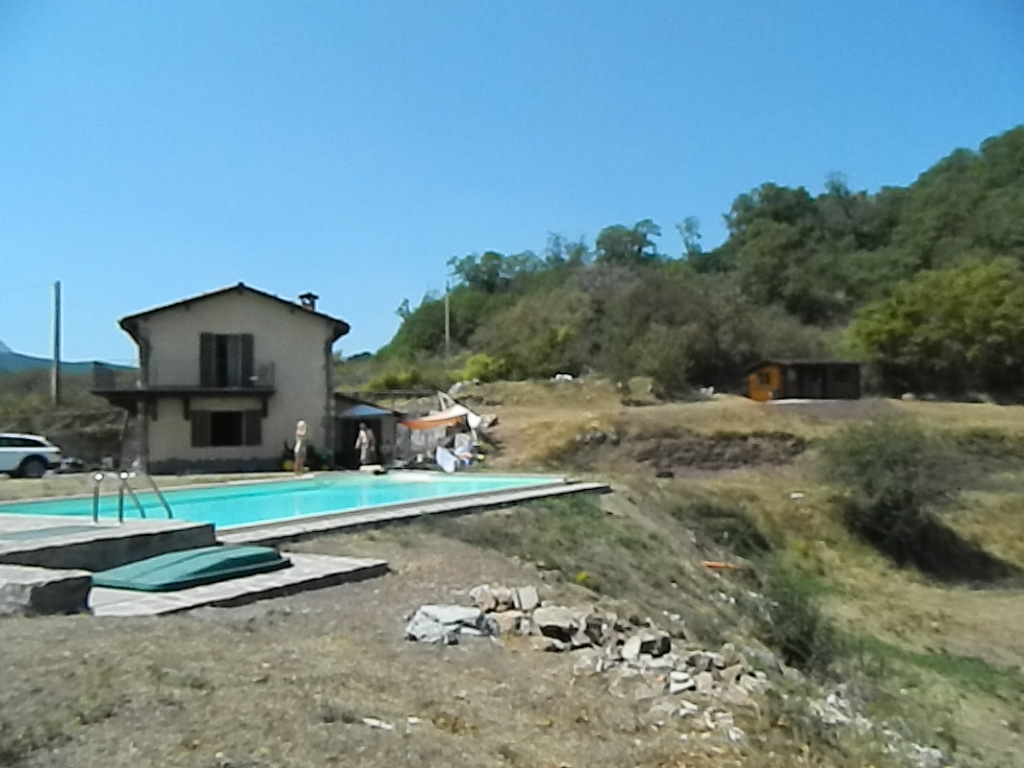
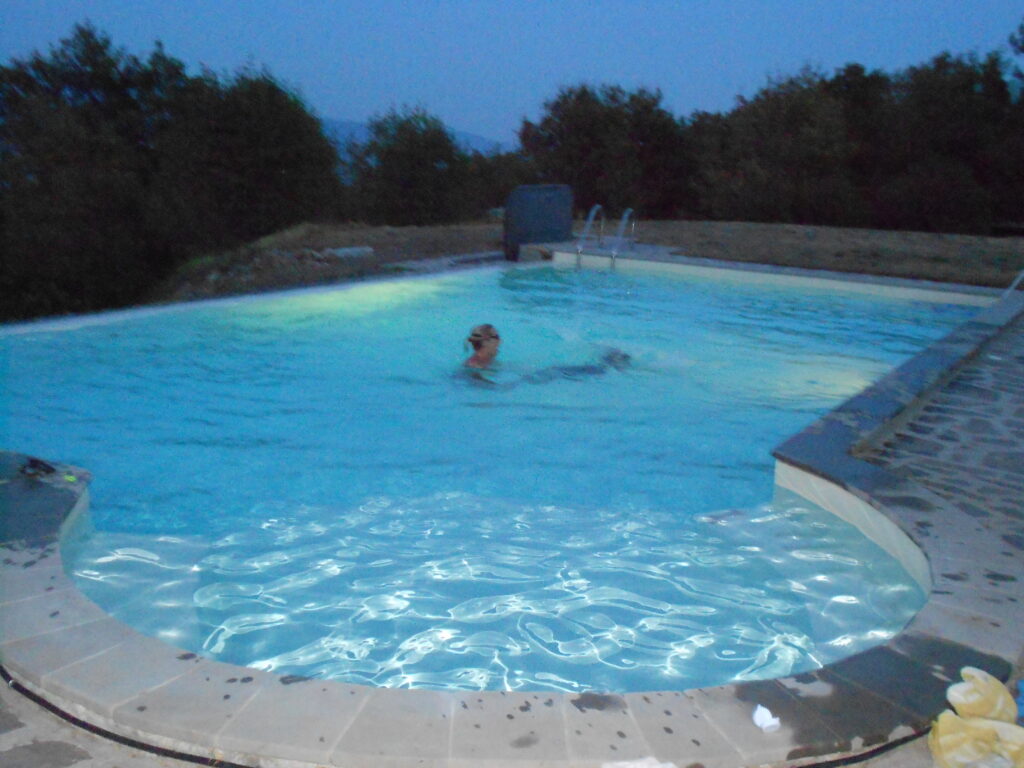
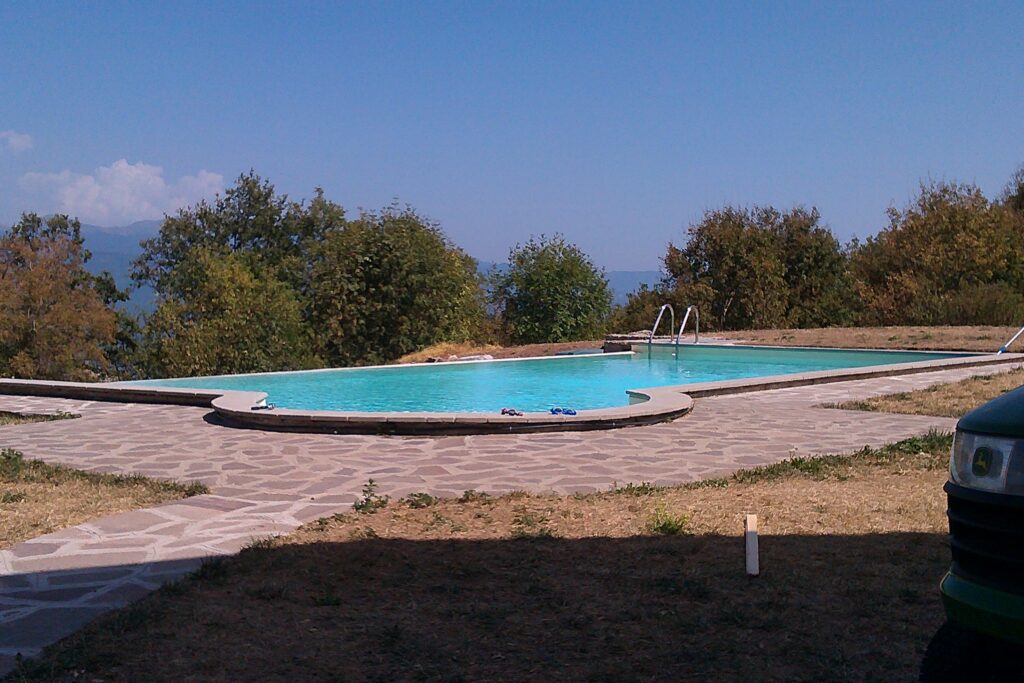
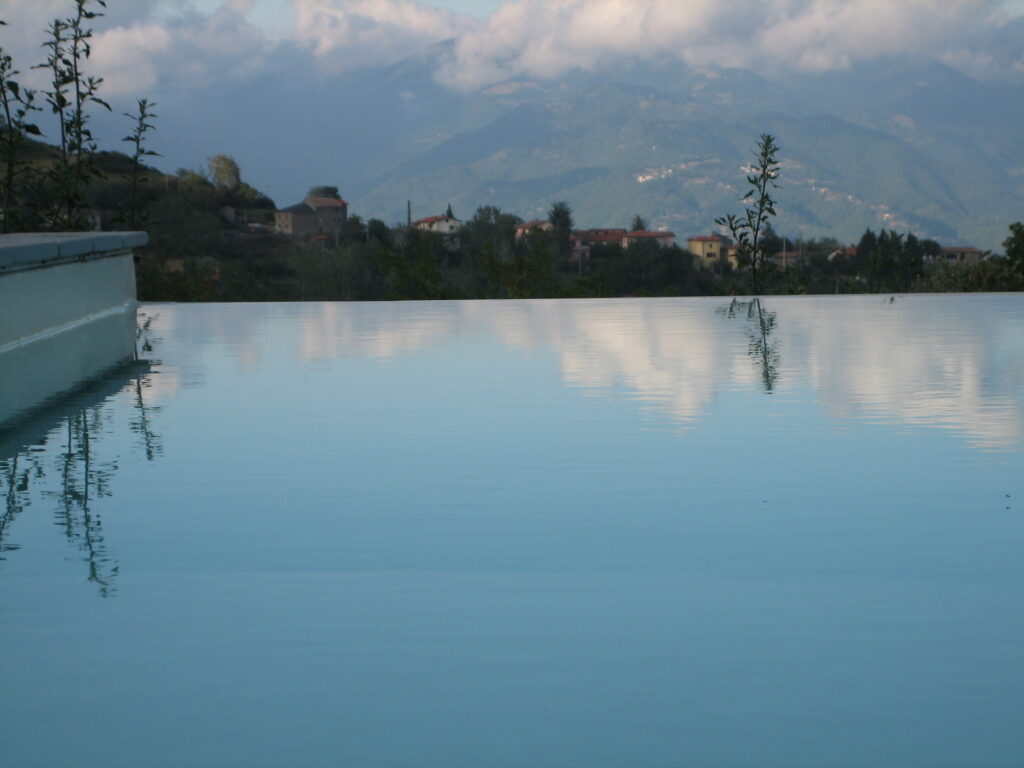

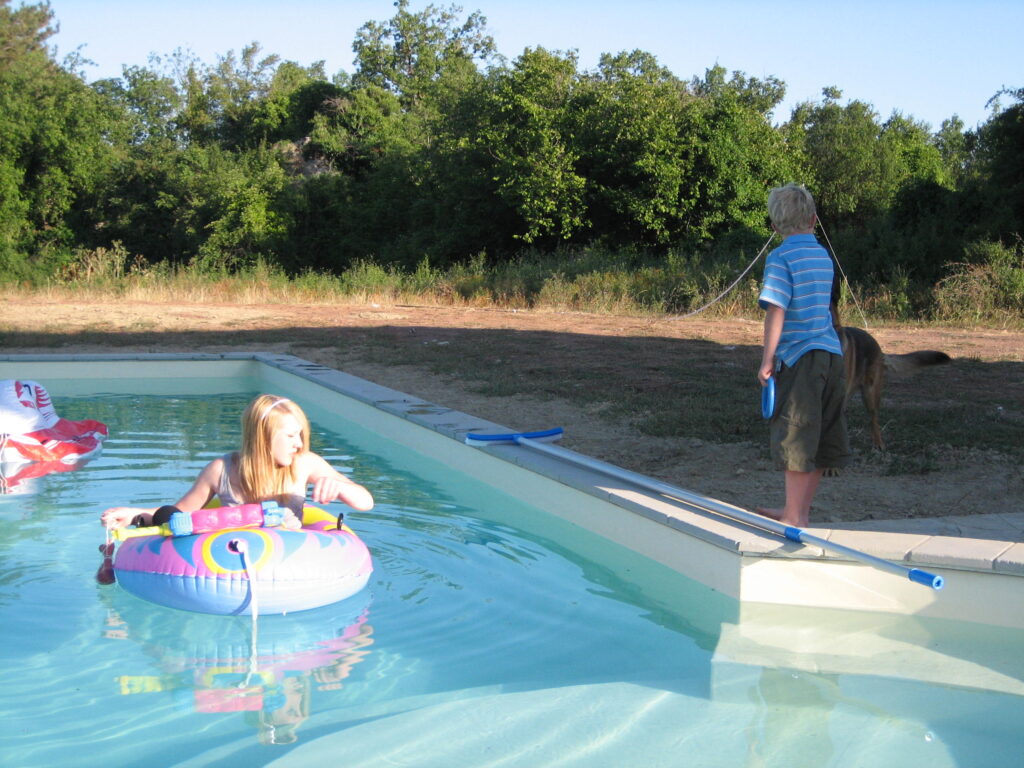
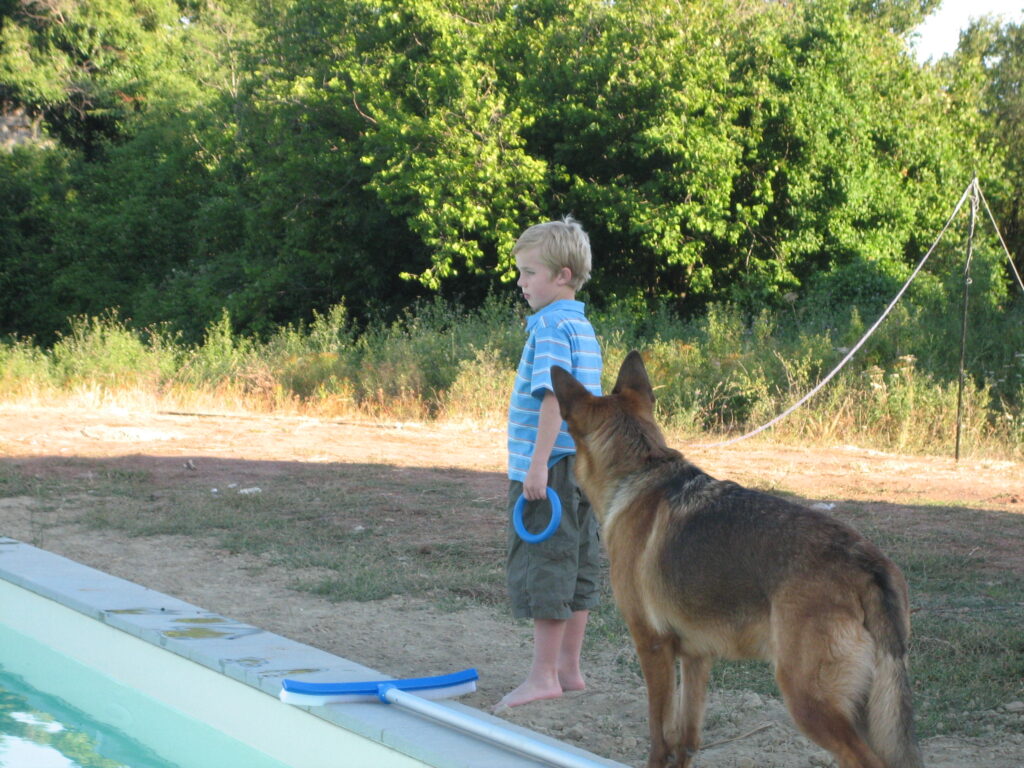
In 2008, we added solar panels. At 950m asl we are usually several degrees below the temperatures lower down in the town, and felt that increasing the water temperature by 3 or 4 degrees would make the pool more appealing and for longer seasonal use, so plans were put in place for the addition of solar panels.
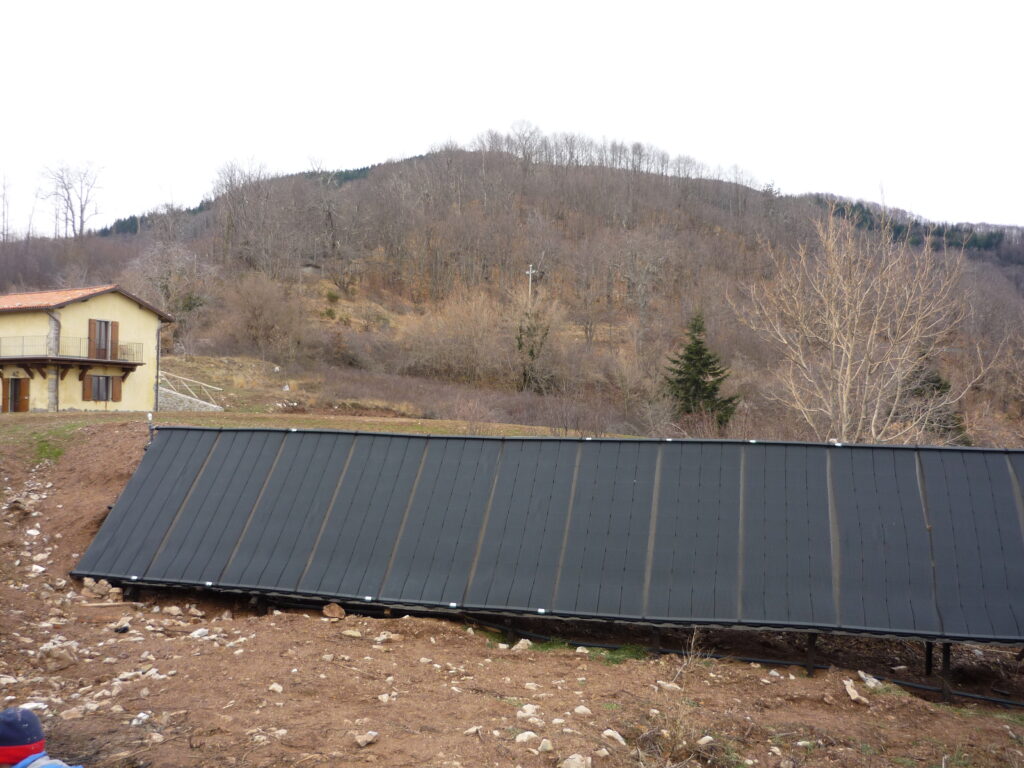

We had no idea they would be so big (approximately the same surface area as the pool). They are not the usual glass type, but a series of small black rubber tubes. The water runs through the tubes, is heated by the sun, and then returned to the pool via an underground pipe.
We have had a number of issues with these panels, but have eventually managed to get them operating at their most efficient.
When they were first put in, they were placed at too steep an angle to have enough time for the water to heat up.
After several years, the structure collapsed, and was repaired, but again fell down.
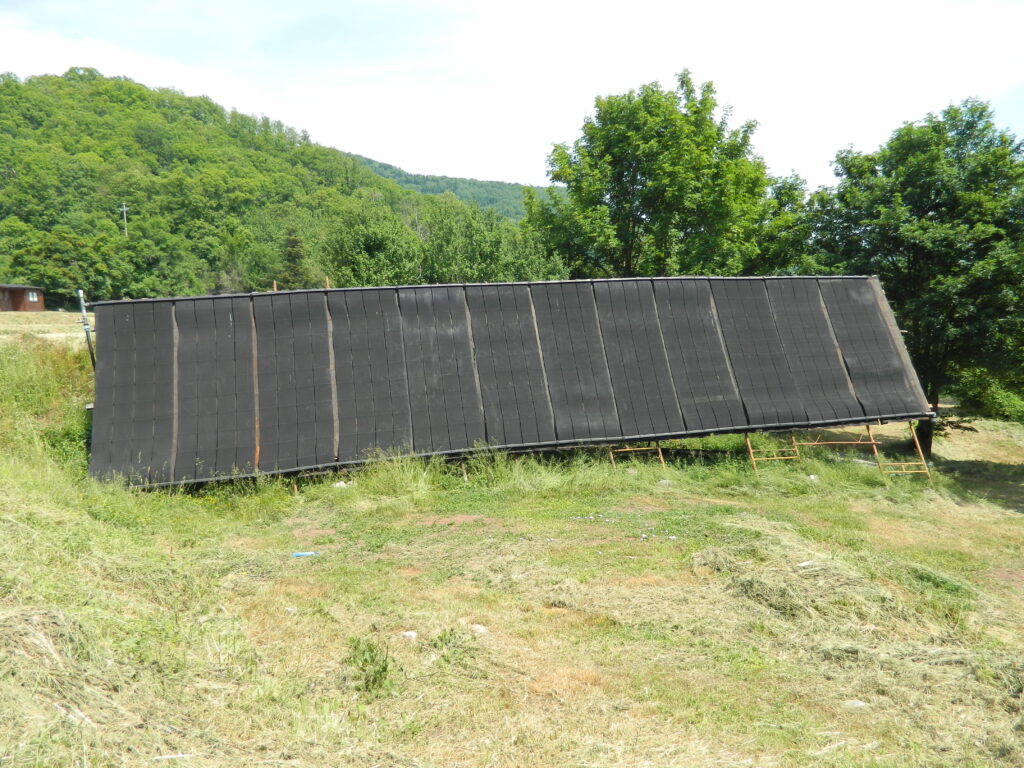


In 2016, we decided to reconstruct the frame ourselves. Dimensions were taken, and a frame built in sections in the UK. We then bought the sectional frame, boards and and rolls of roofing felt, over in a large trailer, to construct ourselves. The previous winter, the solar panel sections has been stored in the house.

A friend dug out and levelled a suitable base. In May 2016, we began the construction which took 10 days. Unfortunately the weather was against us, and each day it rained torrentially.
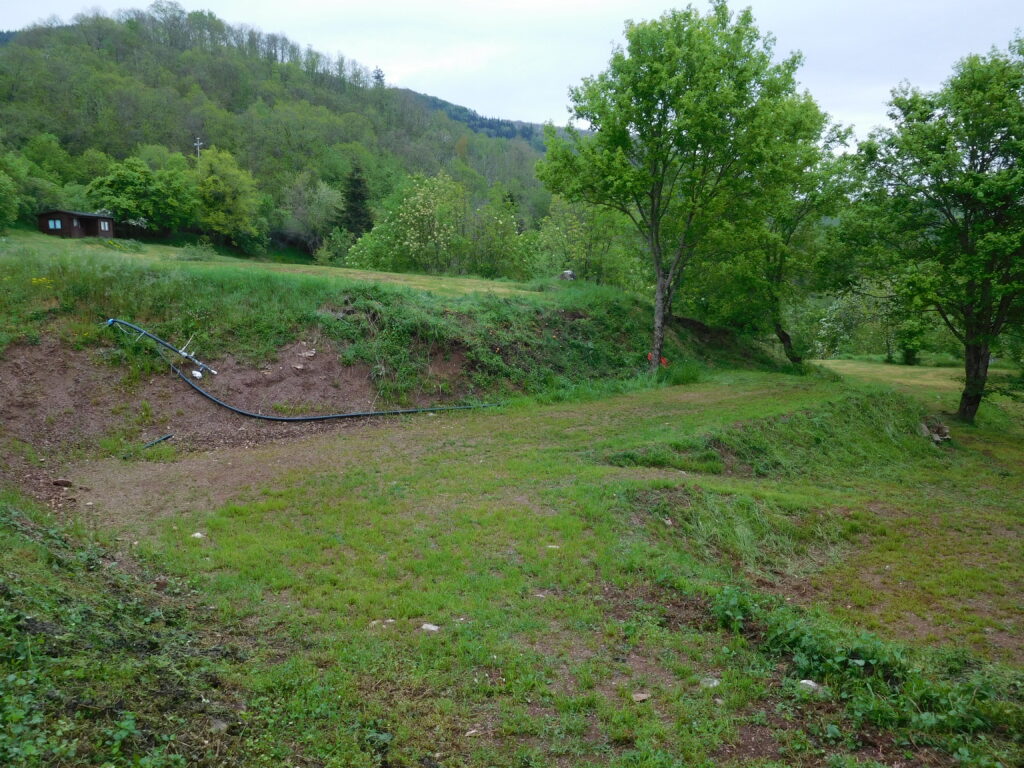
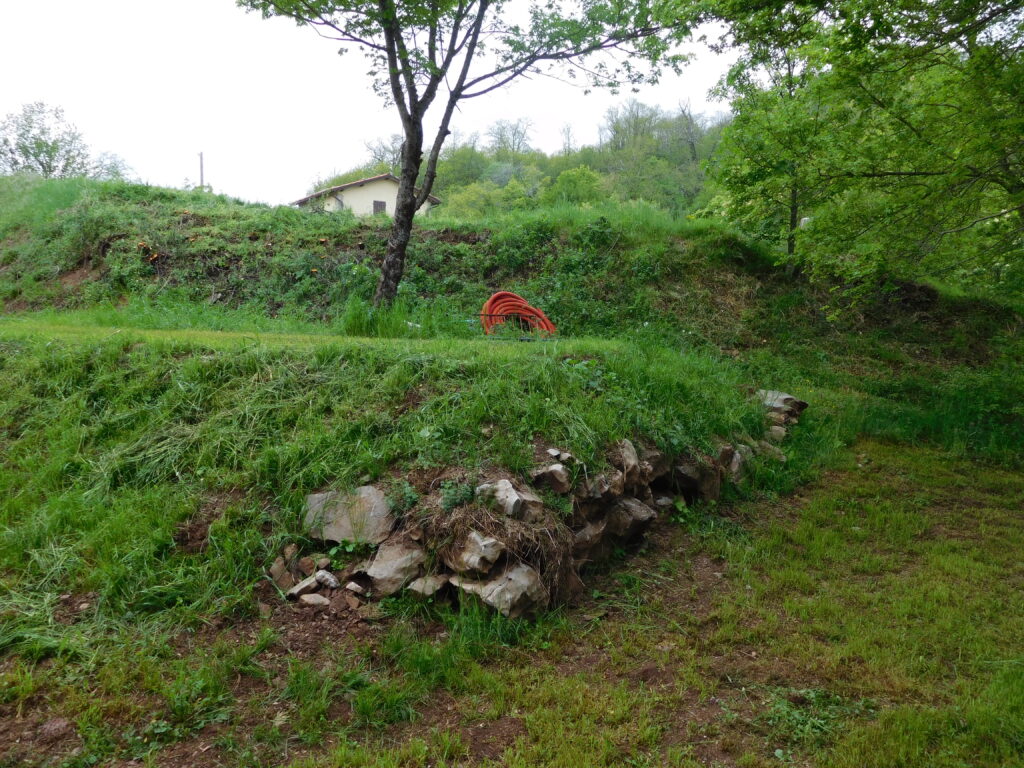
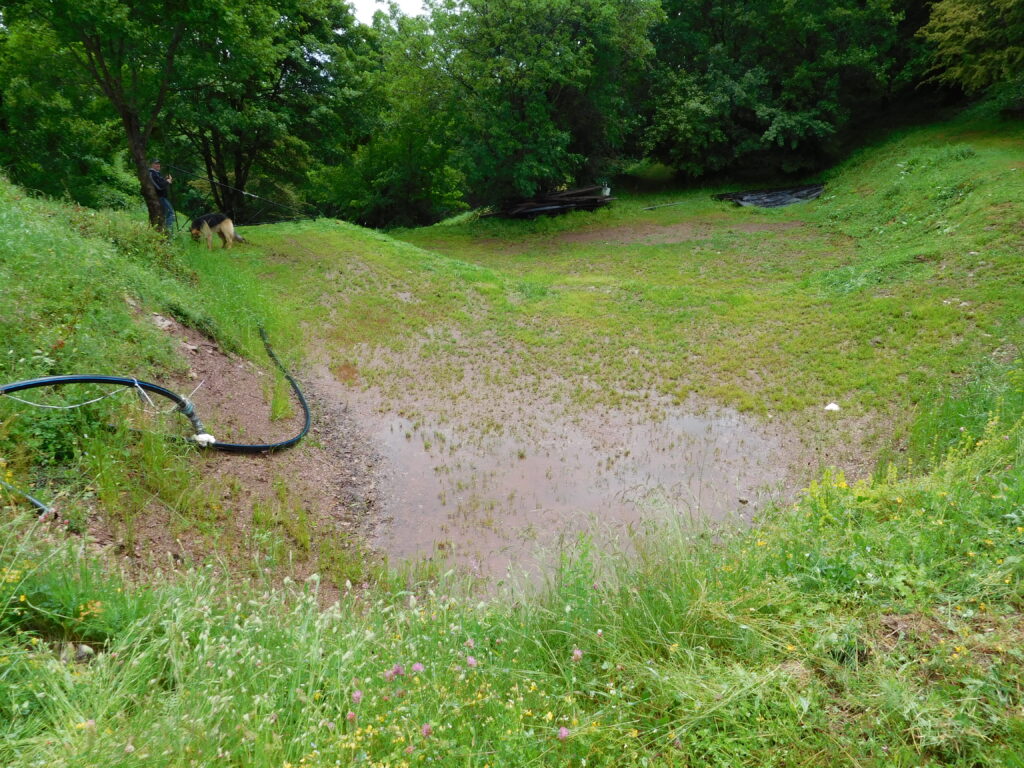

We did get the job done though.
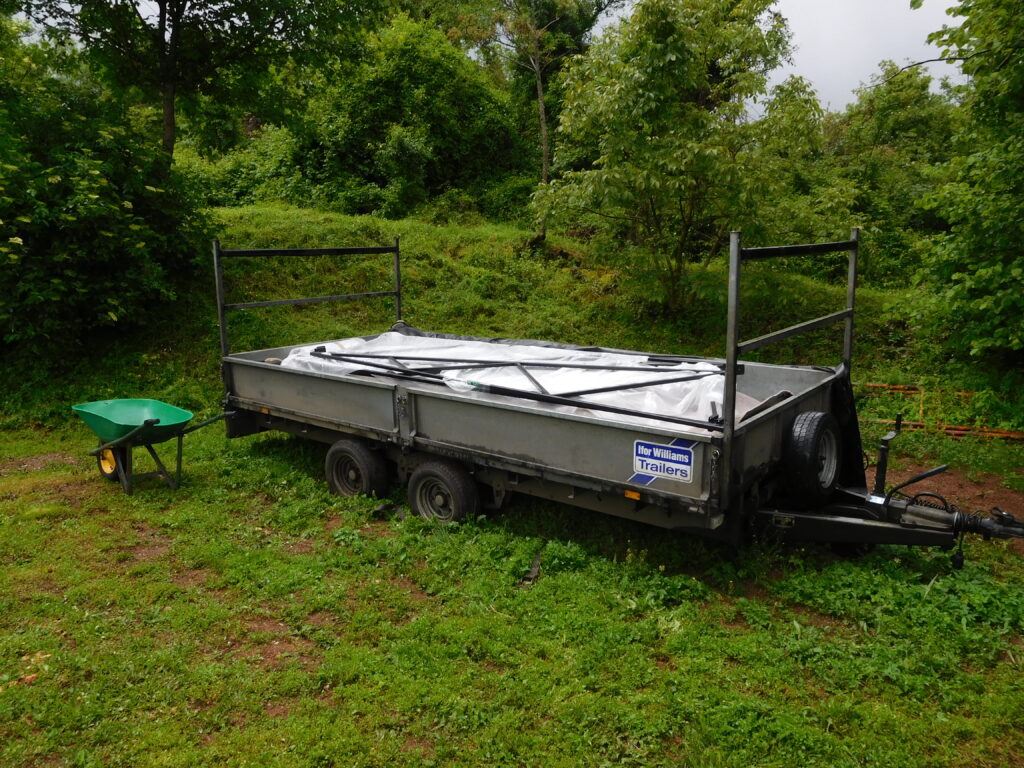
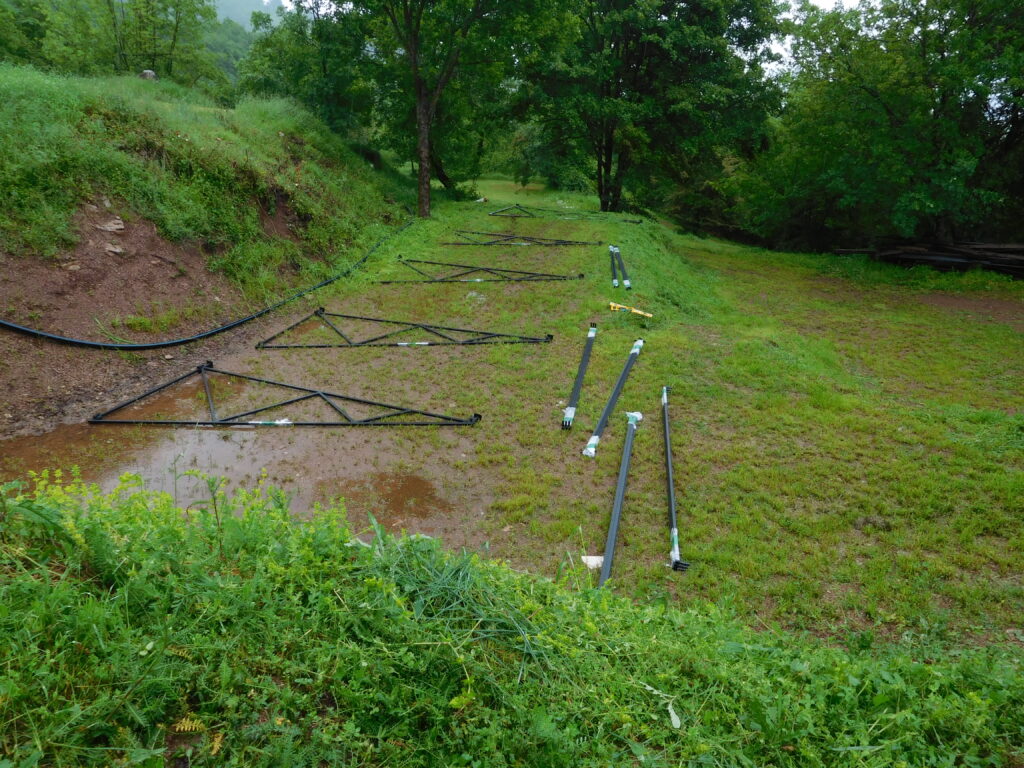

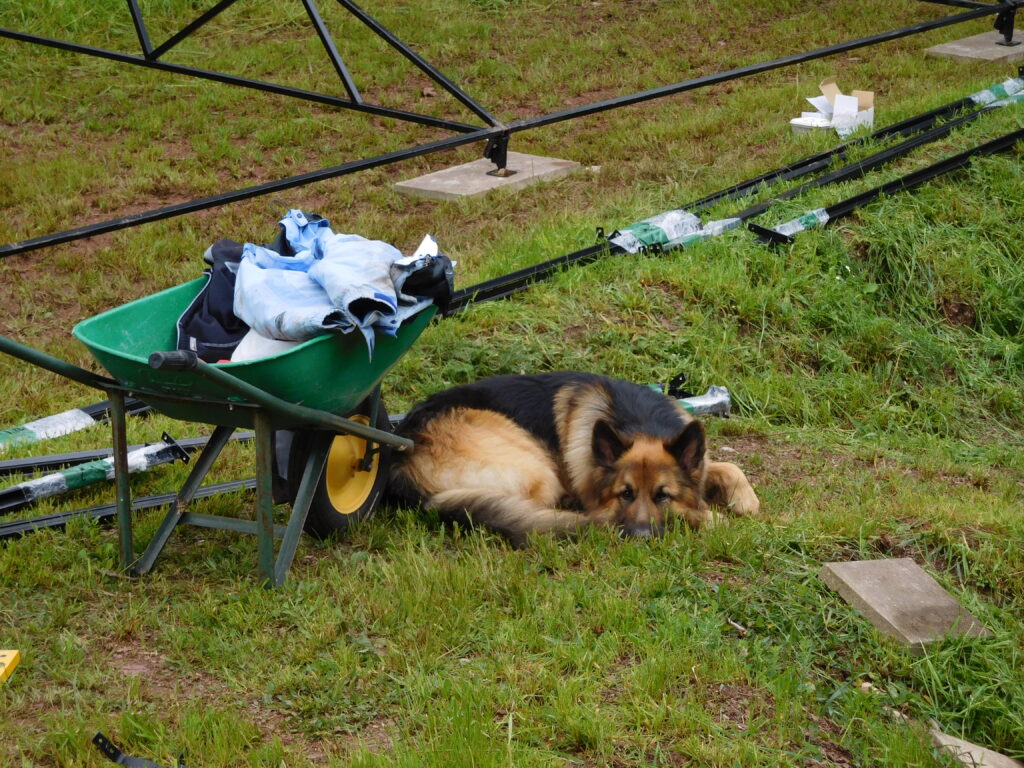
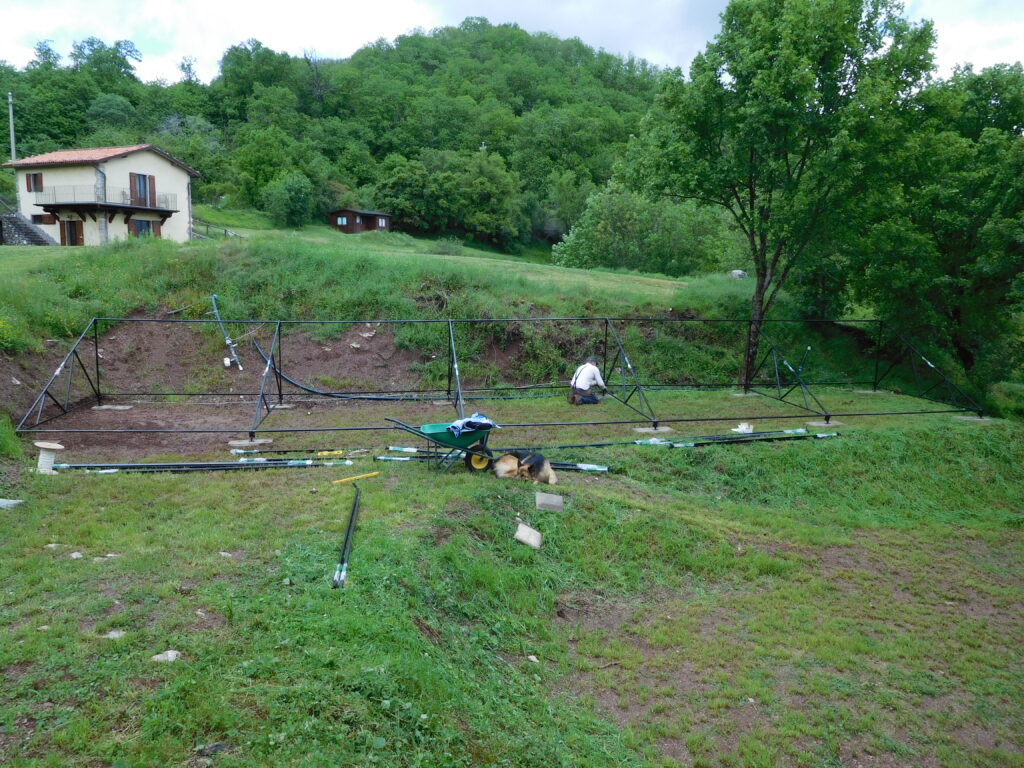
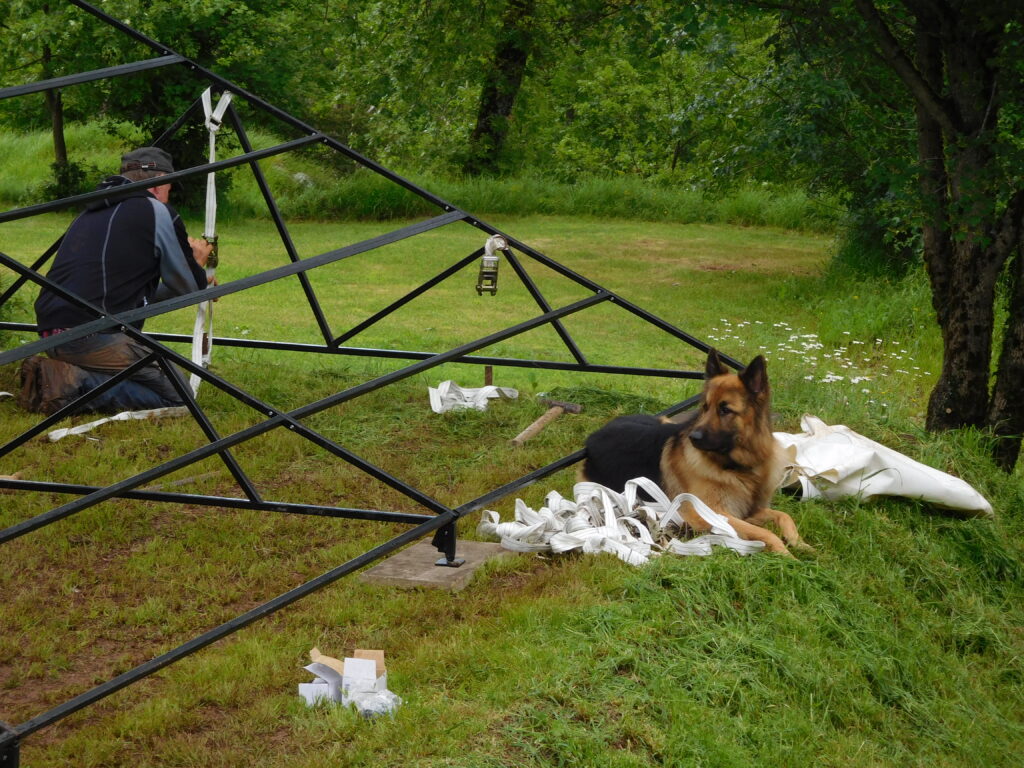
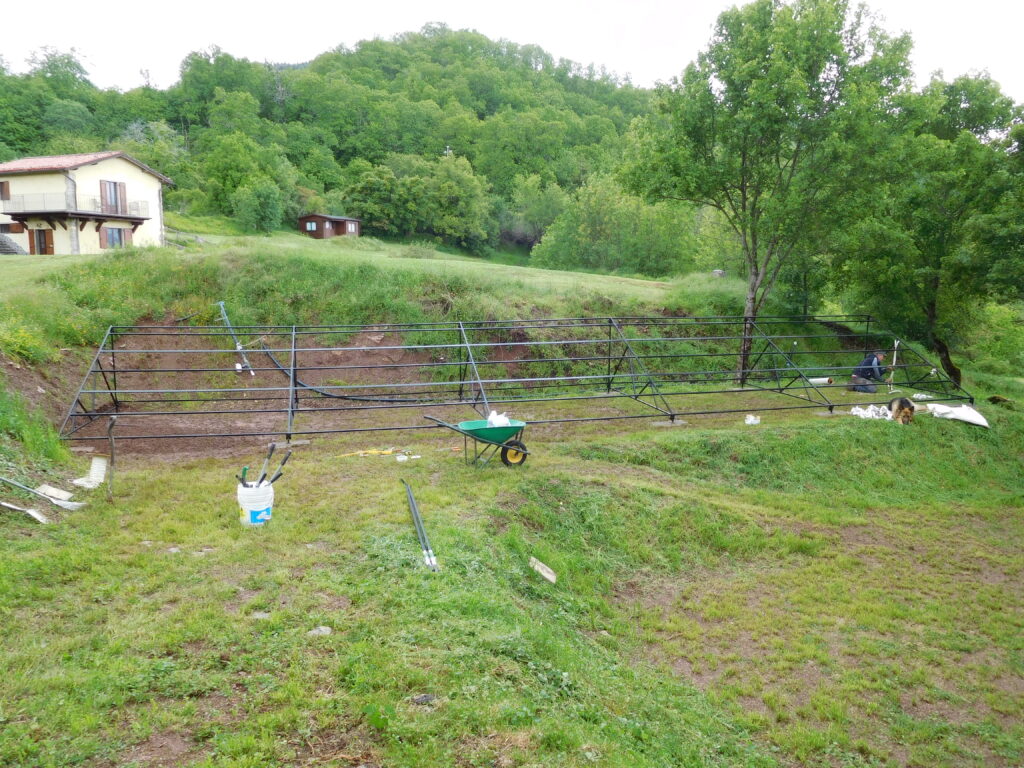

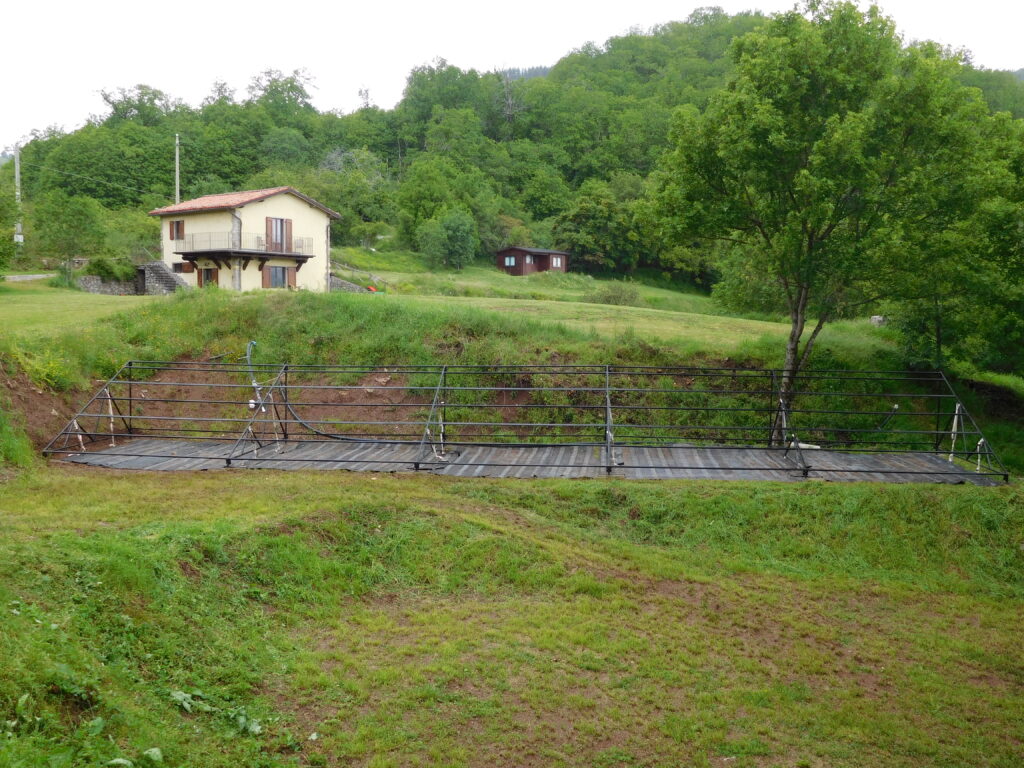
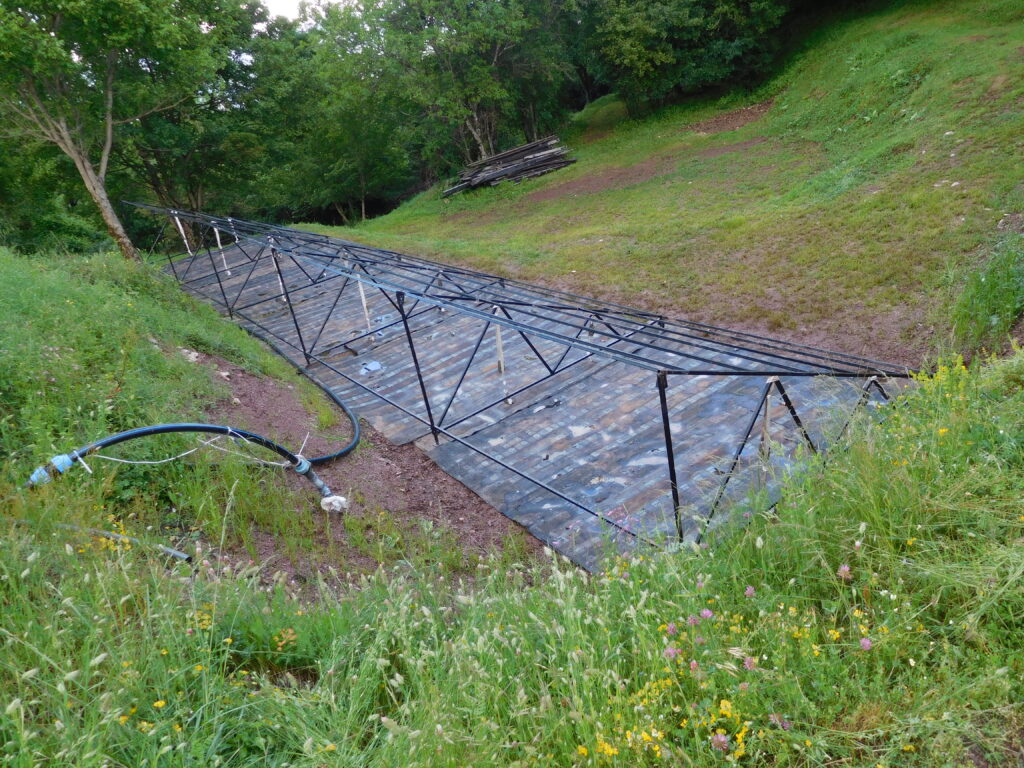
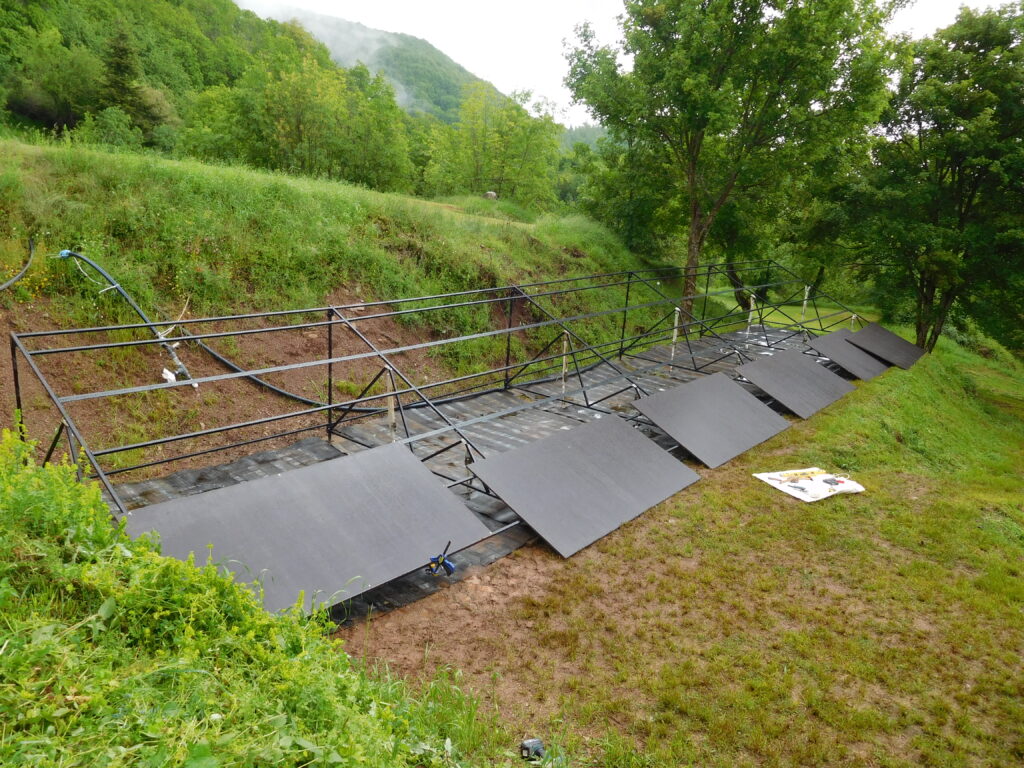
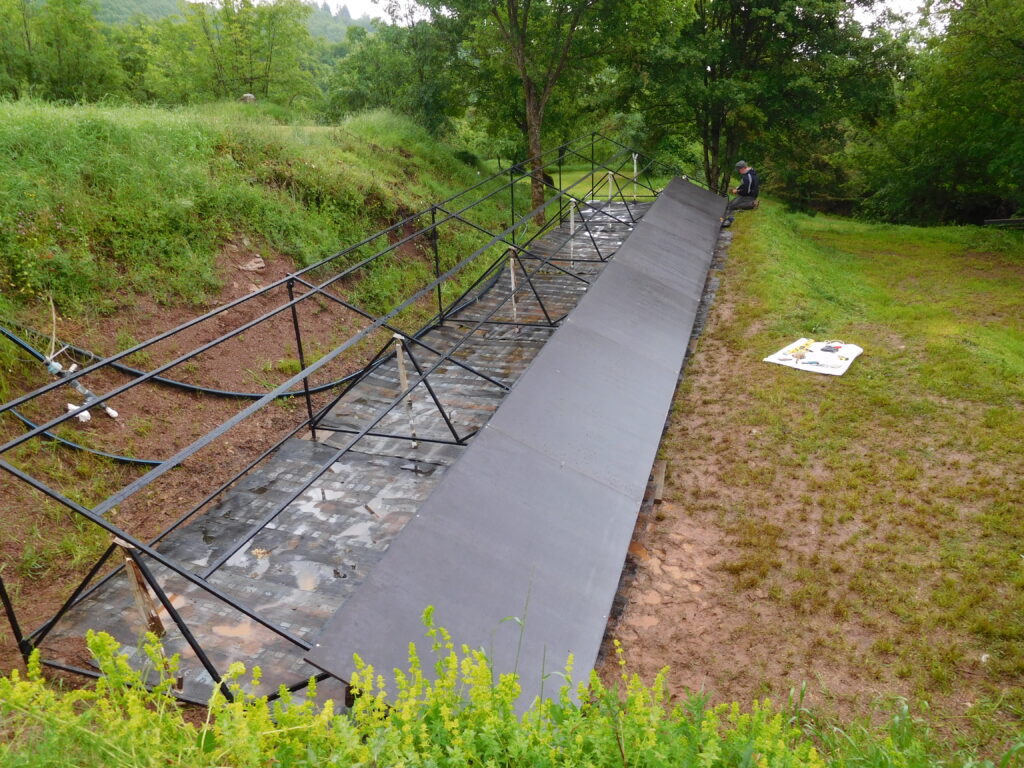
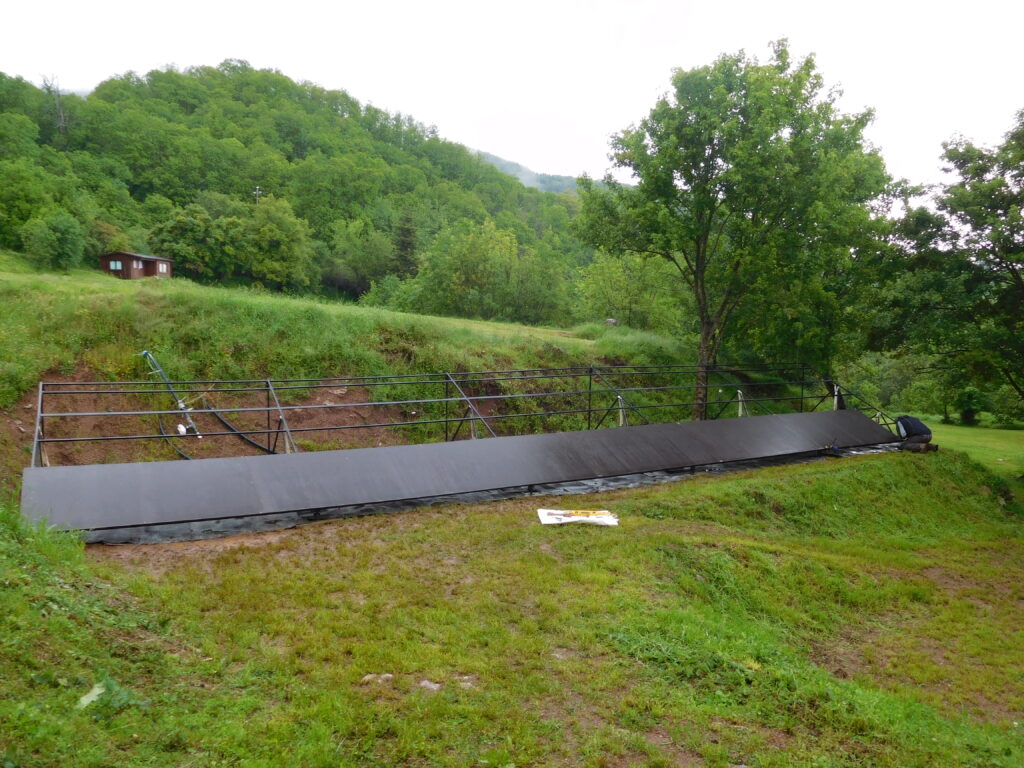
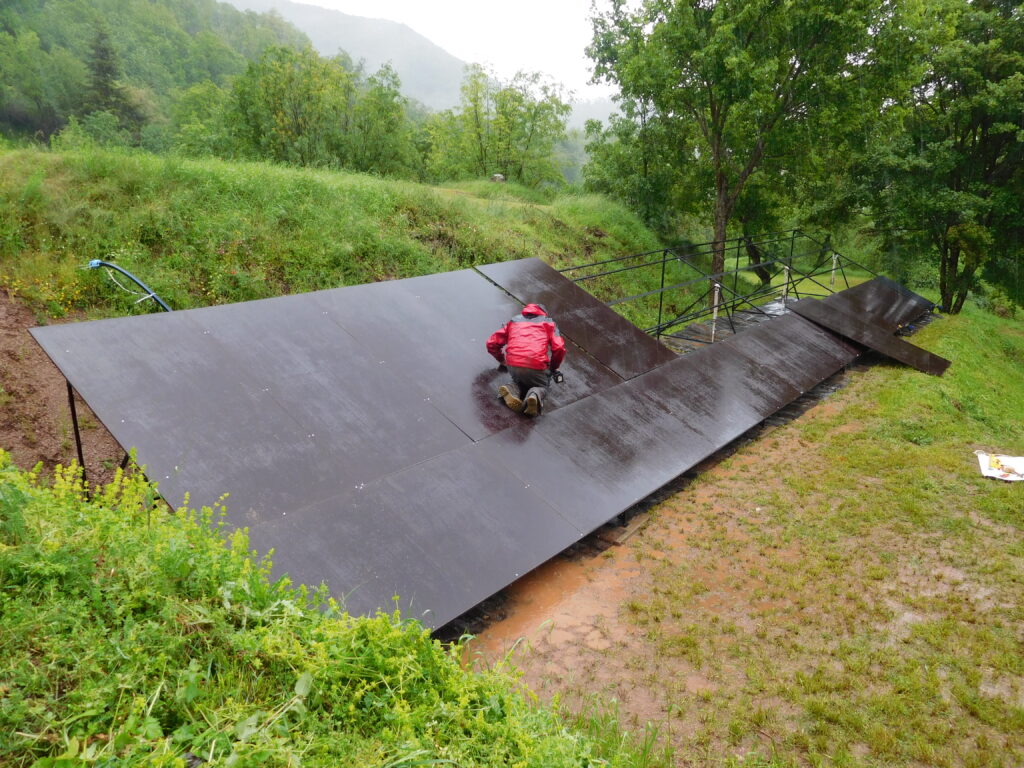
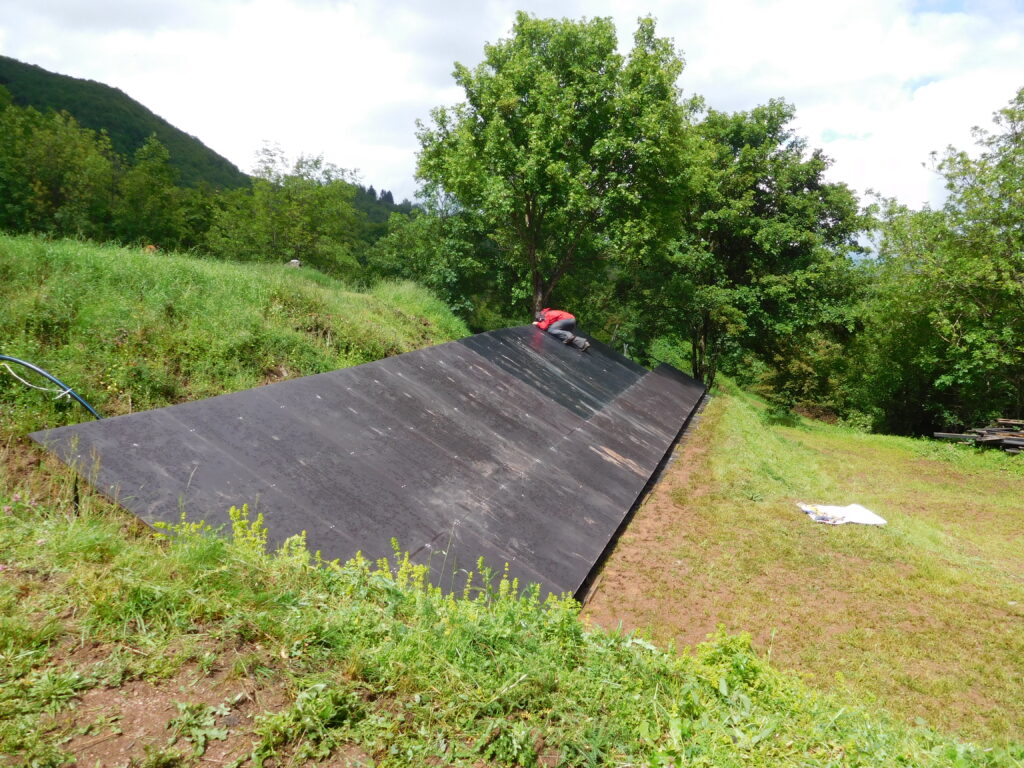

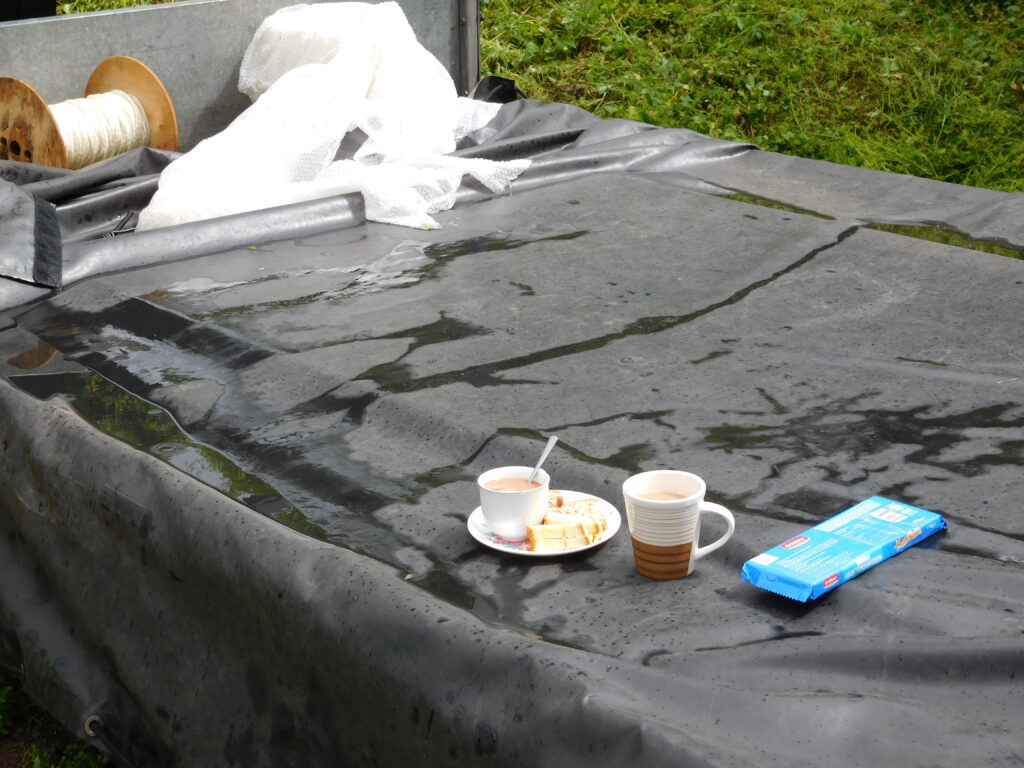
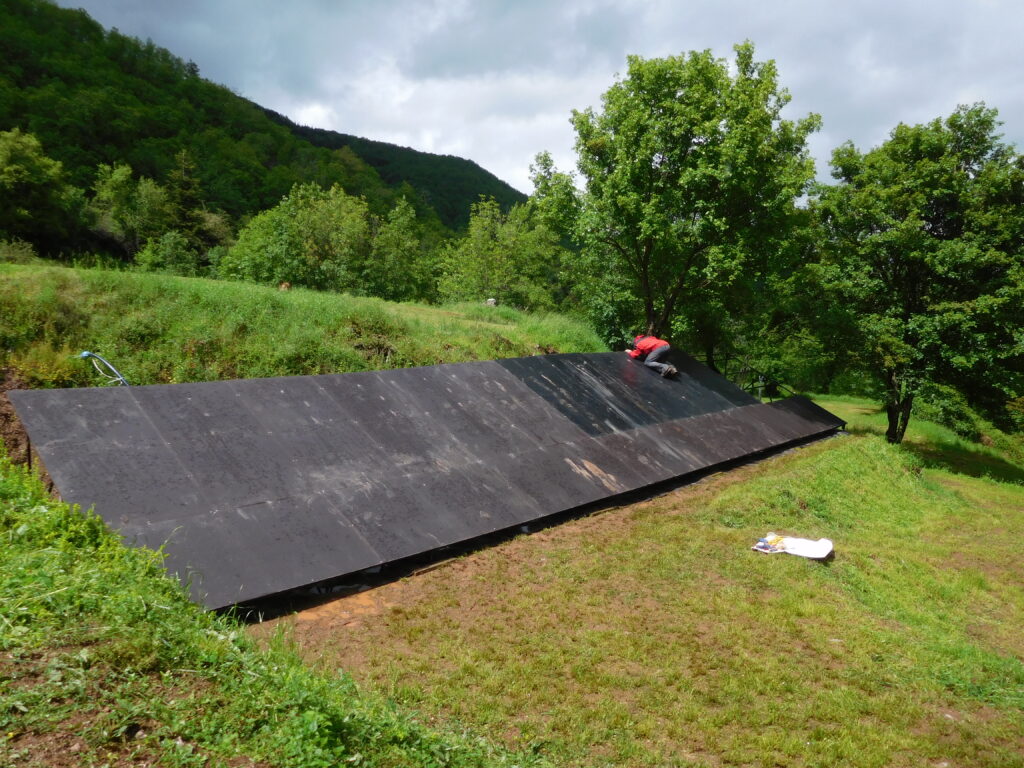

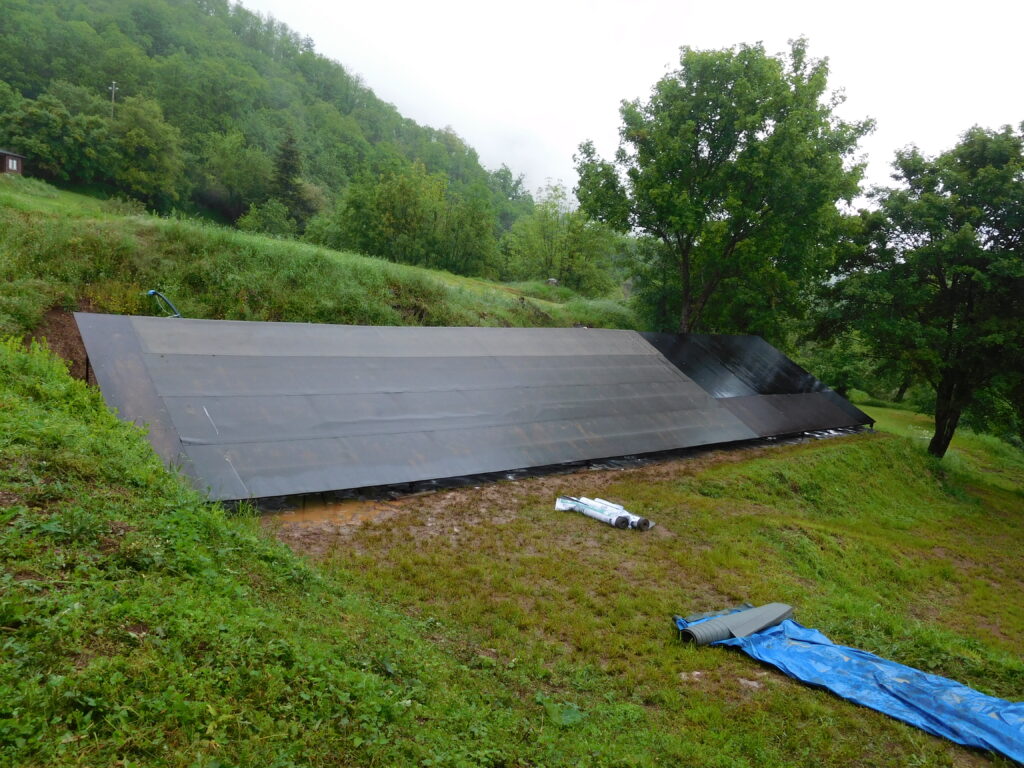

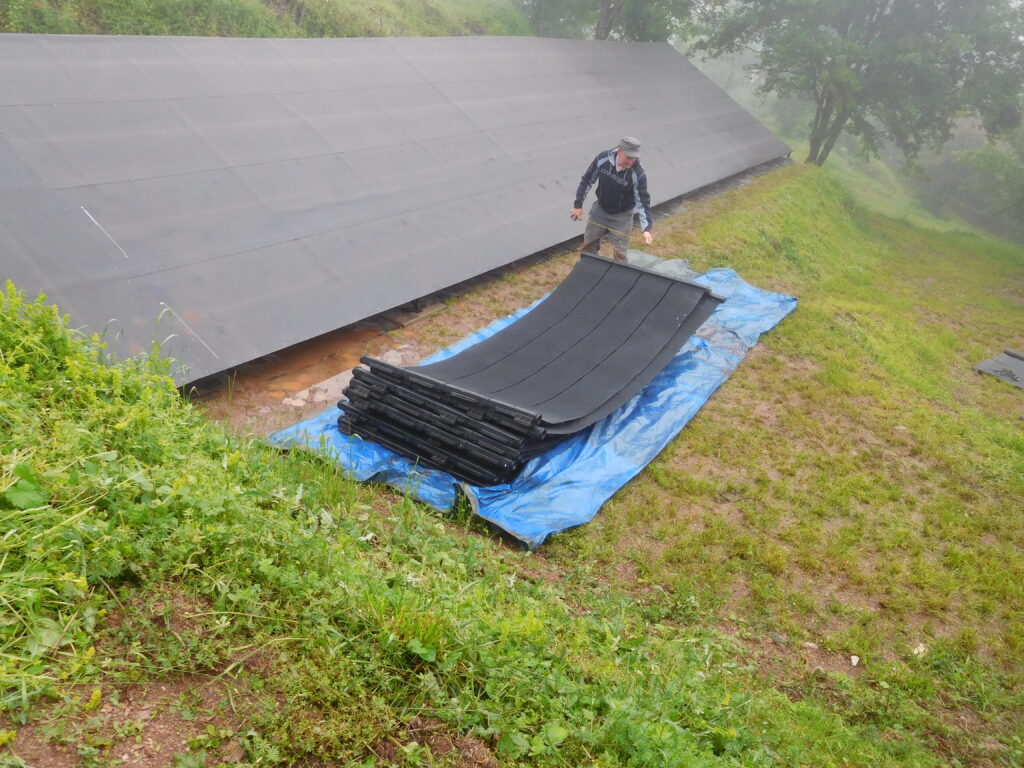
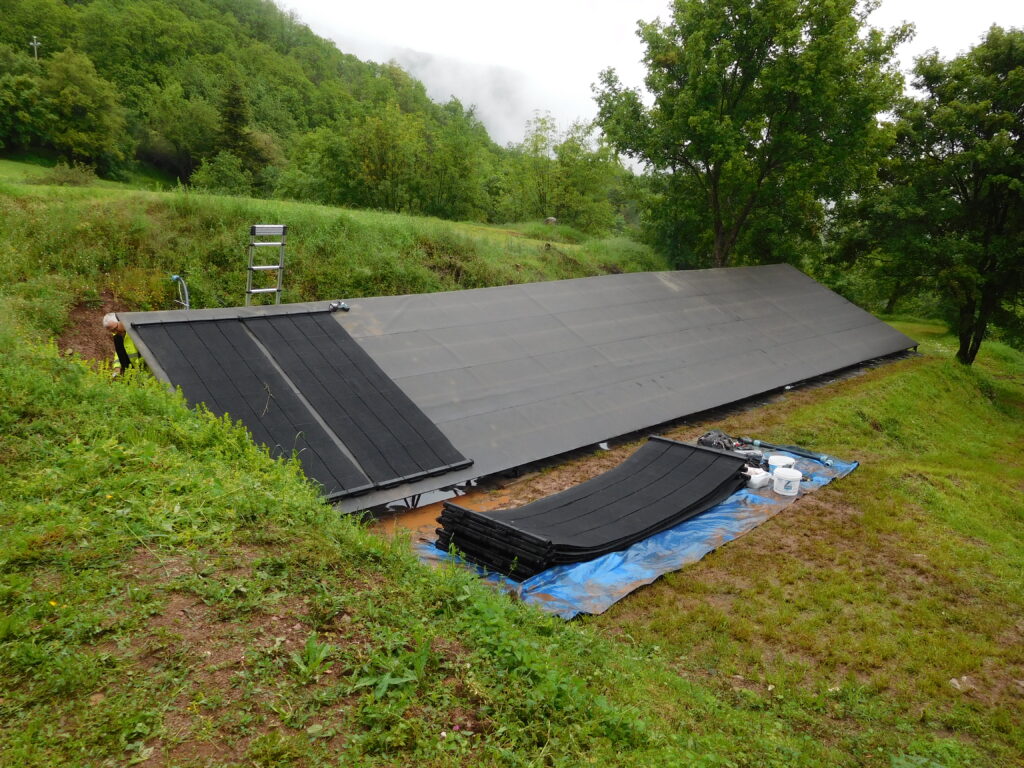
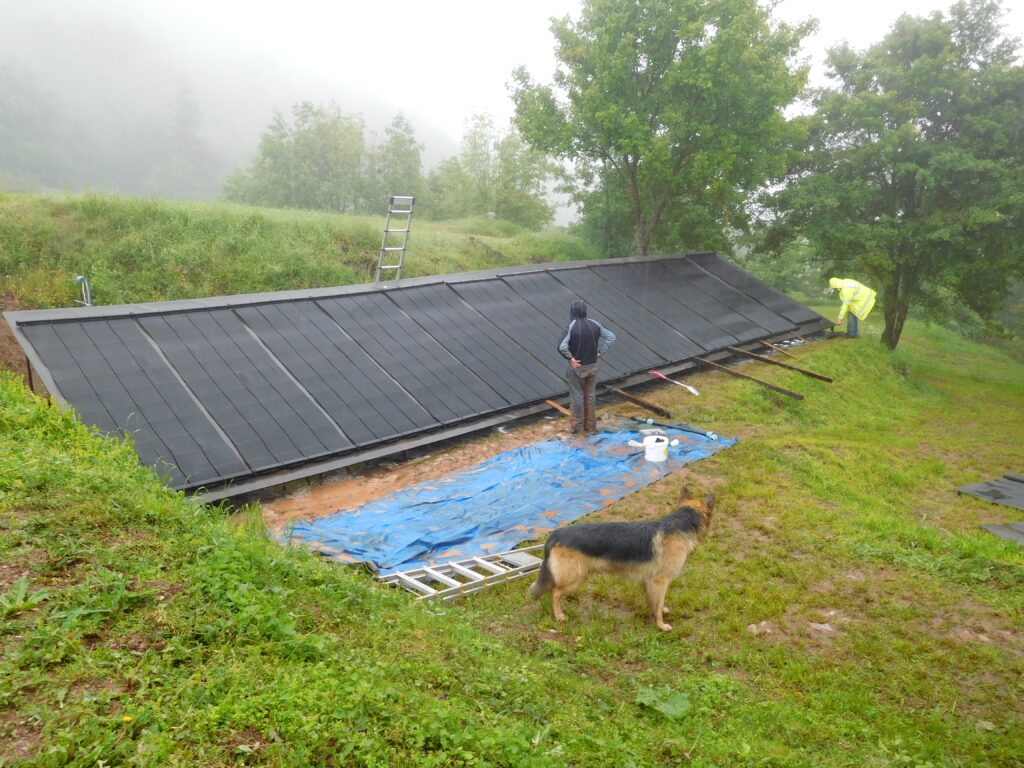
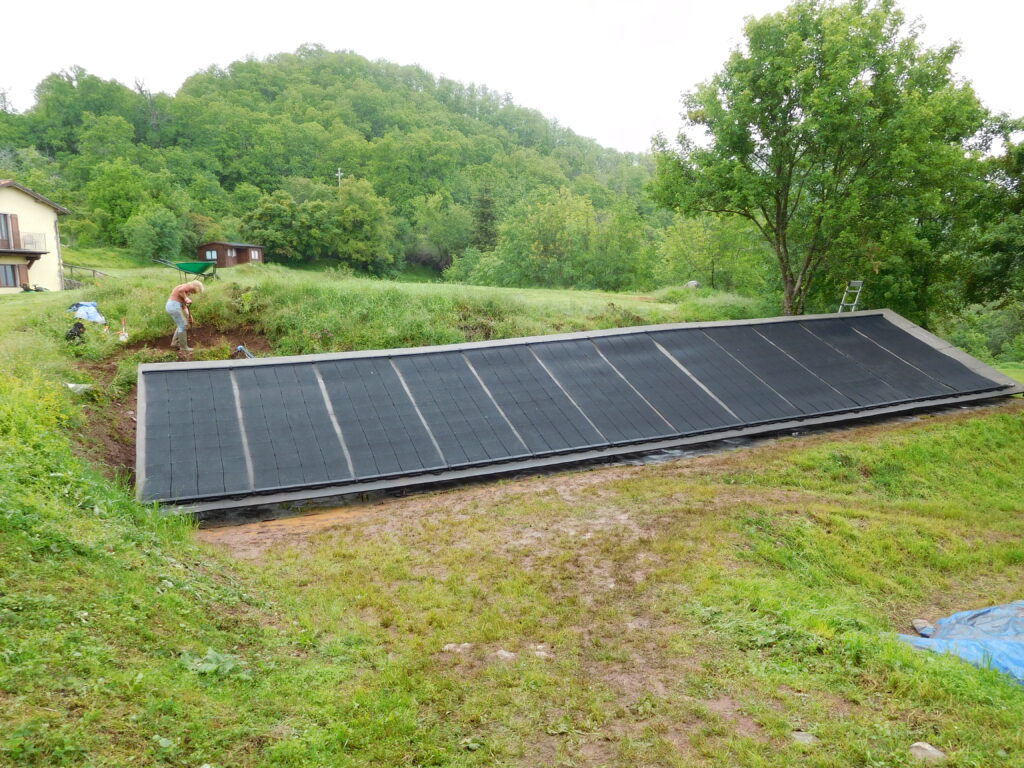
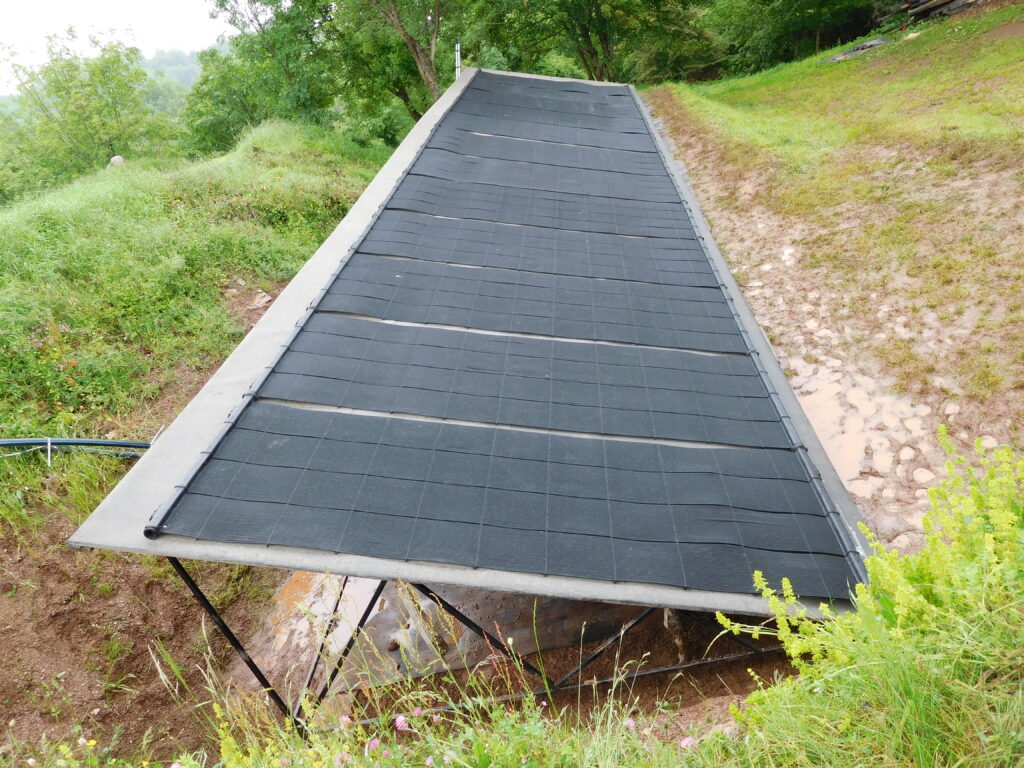

The weather was awful.



Now it is a case of keeping the frame clear of weeds, and continually repairing or replacing the components of the panels which are subject to the effects of weather and nature.


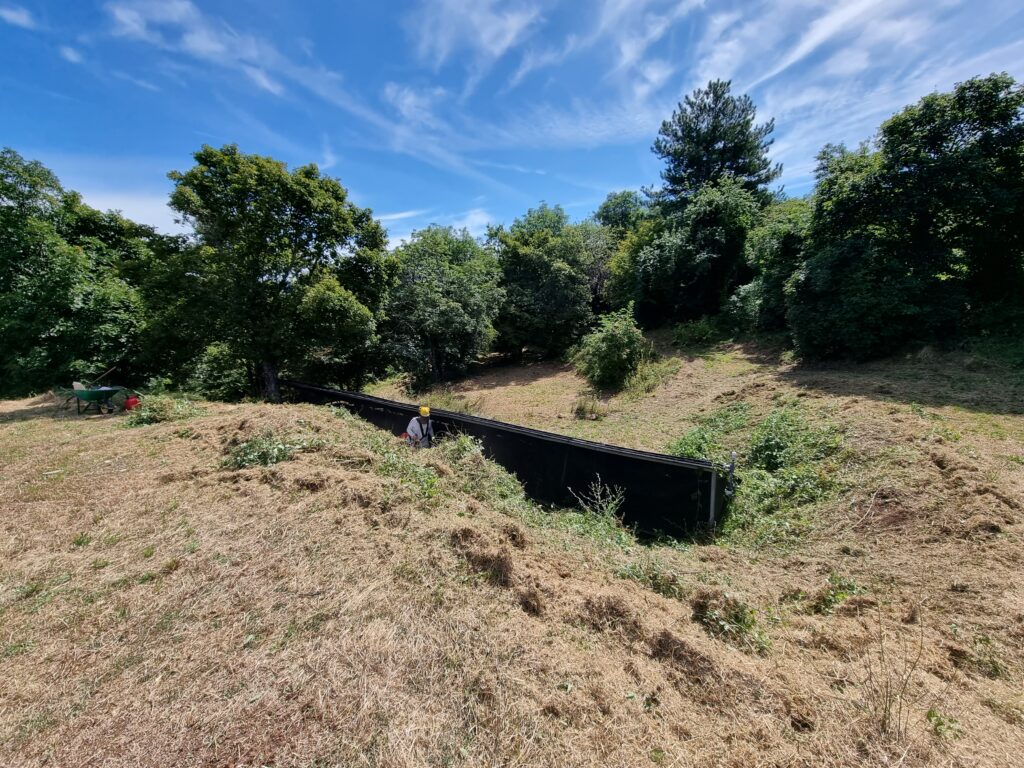


The solar panels raise the water temperature by 4 or 5 degrees.
The wood from the original panel frame was put to good use – To build raised flower beds, a compost bin, wood stack frame and patio bench were built.
